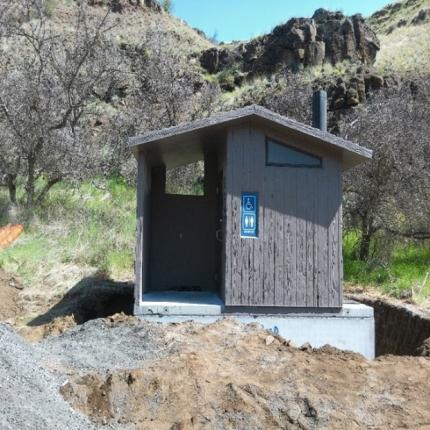
Wildlife Program report: Apr. 16-30, 2023
Providing Recreation Opportunities
Optimizing Fishing on WDFW Managed Lands: An internal steering committee comprised of Wildlife Program, Fish Program, and Enforcement leadership met on April 17 to continue work on a framework to support water access area planning. The framework will be piloted in Region 4. Planning will be supported by a demand survey being developed in collaboration with Washington State University (WSU).
States Organization for Boating Access Symposium: The 2023 States Organization for Boating Access (SOBA) Education & Training Symposium will be co-hosted by the Washington State Parks and Recreation Commission, Washington Recreation and Conservation Office, and Washington Department of Fish & Wildlife, Aug. 28 to Aug. 31, 2023, in Tacoma. The SOBA Symposium brings together state boating officials, consultants, engineering firms, manufacturers, suppliers, publishers, and other businesspersons interested in boating access. Environmental Planner Belson and Communications Consultant Couch are representing WDFW on the Washington organizing committee.
Wildlife Area Route Inventory: We have been working with our Geographic Information System (GIS) team to get data from wildlife areas on roads and trails that exist on the land. There are a few wildlife areas where this route inventory has been prioritized either because of intensive use or as part of a current planning process. The initial focus is the Quincy Lakes Unit in the Columbia Basin. We are in the process of developing an application that our contractor, the local trails collaborative, can use to collect trails inventory and conditions data that will link directly to our GIS platform. This model will be next applied in the Methow later this field season.
Program Development: An outline has been developed and writing has begun on a Travel Management Program manual that will encapsulate the different components of travel management for the agency. It will serve as a guide for wildlife area managers and land operating managers in managing roads, trails, dispersed recreation, trailheads, and camping areas.
Rulemaking: Draft rules have been developed related to closing user created routes, keeping motorized use on roads designated for that use, and then considering all routes closed to motorized, electric, and mechanized use unless they are designated as open to that class and during an appropriate season. These rules have been presented to the Travel Management Workgroup and will be further refined by the Rulemaking Committee.
Accessibility: An interdisciplinary subcommittee on accessibility on roads and trails has been formed with staff from across the agency. Providing needed accessible and adaptive recreational opportunities for the disabled and aging populations is a priority for this group. Their work will be incorporated into the Travel Management Program manual.
Recreation Impacts Management: The legislature partially funded a decision package to support work in the Lands Division to expand capacity for ecological integrity monitoring across WDFW managed lands. Funding will support collaborative work with Department of Natural Resources (DNR), Washington State Parks, and tribes, which will include efforts to develop a framework for monitoring recreation impacts on habitat and wildlife.
Coordination with Tribes: At the past two Centennial Accord meetings, multiple Washington tribes asked the governor to organize a task force with tribes and state land managers to address the impacts of recreation on treaty rights and resources. Governor’s Office of Indian Affairs hosted a kickoff meeting for tribes, the Governor’s Office, WDFW, DNR, and Washington State Parks on April 27.
Conserving Natural Landscapes
Wildlife Area Management Planning: A draft of the L.T. Murray Wildlife Area plan is out for external review to tribes, the L.T. Murray Wildlife Advisory Committee, and WDFW Diversity Advisory Committee. A public open house on the plan is tentatively scheduled for June 14, at the Kittitas County Fairgrounds.
A draft of the Skagit Wildlife Area plan is being reviewed by the internal planning team and the goals and objectives were presented to the Skagit Wildlife Area Advisory Committee on April 12. Planning is also underway for the Methow Wildlife Areas with planning team and Wildlife Area Advisory Council (WAAC) meetings scheduled for the second week of May.
Planning for the Cowlitz Wildlife Area commences in May with an initial WAAC meeting scheduled for May 9 followed by an internal scoping meeting with the planning team on May 16.
A Section 6 Management plan has been drafted for Violet Prairie and is undergoing internal review.
History of Invasive Cattail at Fir Island Farm: Weed Team Member Zimmerman developed a history of invasive cattail invasion and management at Fir Island farm, which will help to shape and improve detection and control of invasive cattails in existing and future wildlife areas.
Prescribed burn in Sinlahekin: Prescribed Burn Team Member Eberlein participated in a burn on a 51-acre prescribed burn in the Sinlahekin area. Led by DNR, the burn was a cooperative effort across multiple ownerships aimed at reducing impacts of potential future wildfires and improving habitat. Partnering across ownerships allows fire professionals to set fire lines for better burn control and more natural fire patterns.
Providing Education and Outreach
Ambassador Program: The Washington Trails Association (WTA) has been hired as the contractor to manage the volunteer ambassador program starting on July 1, 2023. Volunteer recruitment is underway. Ambassadors will be stationed at the following sites:
- Lewis Butte and Pipestone in the Methow
- Thorp
- Teanaway Junction
- Two sites in L. T. Murray in Region 3
Sign Standards and Guidelines: A process lasting over two years has concluded and the final version of the WDFW Sign Standards and Guidelines is now complete! The first round of 20 kiosks will be fabricated by the end of the biennium and installed in Region 4 in fall of 2023. Regulatory signs will be in Spanish and English on the new kiosks. Additionally, they will have a QR code that will link to translation in 11 languages. The sleek new kiosks will aid in making WDFW managed lands more welcoming and accessible.
Annual Fire Training: Prescribed Burn Team Eberlein hosted four annual fire training sessions, which are required for WDFW and Washington State Parks staff members to maintain and refresh national wildfire certifications and standards. In all, 51 WDFW and 34 State Parks personnel participated, including the three-mile walk with a 45-pound weighted vest in 45 minutes, equating to 147 miles and 2,205 pounds of weight.
Conducting Business Operations and Policy
Teanaway Community Forest: Burnham attended the quarterly Teanaway Community Forest Advisory Committee meeting. Staff members provided an update on the newly awarded grazing lease along the North Fork.
Annual Meeting, The Wildlife Society, Washington Chapter: Burnham presented a talk about grazing, fire, and fuels during an invited session on shrubsteppe. Other talks in the session addressed shrubsteppe wildlife, connectivity, planning tools, wind energy considerations, and the wide range of activities being conducted by the Foster Creek Conservation District.
Continued Prescribed Burning Strategic Planning: Prescribed Burn Team Eberlein continued coordination and participation in cross-agency planning and coordination to build consistency and support across State agency lands.
Other
Drone Training: Weed team members Heimer and Zimmerman continued their training in operating drones. This is in preparation for a new method for invasive weed management which will include mapping and spot-treating invasive species using drones.
Managing Wildlife Populations
Bighorn Sheep: District 3 management personnel conducted multiple mark-resight surveys in the Asotin herd over the past two weeks with the goal of generating a population estimate. Poor weather (mostly blizzard like conditions) limited the effectiveness of two of four surveys. While conducting these surveys, one deceased collared ewe was detected. This ewe was in terrain that was very difficult to access. Biologists Stewart, Vekasy, Wik, and Technician Lowrimore in cooperation with Idaho Department of Fish and Game Research Biologist Cassirer retrieved the carcass whole and transported it to a trail where the carcass could be transported to Washington Animal Disease Diagnostic Laboratory.
Stewart and Lowrimore located, identified, and recorded bighorn sheep in the Black Butte and Redbird subpopulations, Idaho, and Washington. These data are collected to better understand the basic demographics of the herds, develop long-term trends in lamb survival, and detect mortality events reasonably soon after they occur.
Ferruginous Hawk Monitoring: Assistant District Biologist Vekasy continued monitoring historic and recently installed hawk nest platforms. No new platforms have been occupied this season except two platforms that were occupied in the first year of the project. All historic sites are occupied except for one that has been vacant now for three years. A territory with a tree nest that was re-occupied last year after a ten-year absence is active again this year. So far, platform installation has only been successful in stabilizing occupancy and nest success in previously marginal territories.
Providing Recreation Opportunities
New Restrooms at Chief Joseph Wildlife Area: Capital Asset Management Program (CAMP) has been working to replace two fiberglass toilets at the Chief Joseph Wildlife Area with new concrete models. This has been in the works for several years and they are finally being installed.

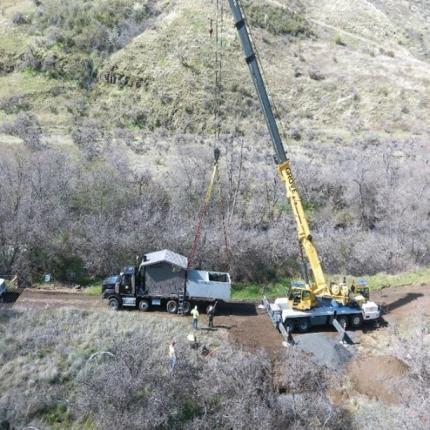
Access Manager Heimgartner reported that CAMP completed the installation of two new CXT restrooms on the Chief Joseph Wildlife Area. One is at the upper Joseph Creek campground and the other is near the old schoolhouse. Both have wastewater alarms installed which is a first for us. Asotin County required installation of the alarms.
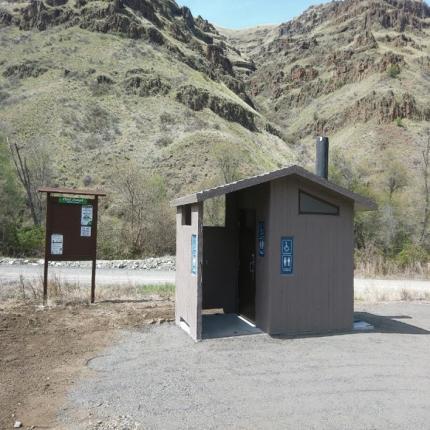
Spring Turkey Camp: Natural Resource Technician Harris assisted with running the 2023 Mentored Spring Turkey Camp in Newport hosted by WDFW, First Hunt Foundation, and National Wild Turkey Federation.
Access Area Openings: North Region 1 Access Manager Dziekan opened access areas for the 2023 lowland lake opener. His duties included lots of cleaning bathrooms and picking up litter. All his access areas have been serviced and are now ready for public use.
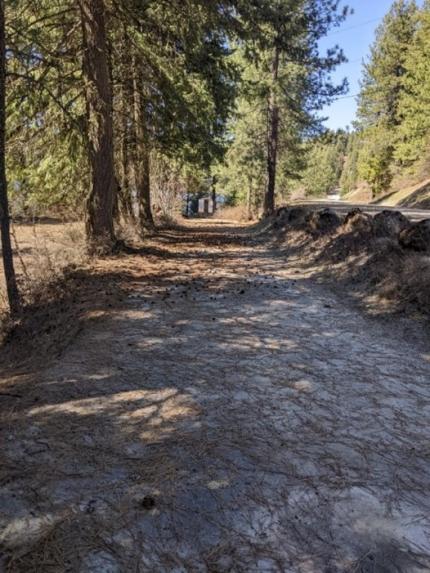
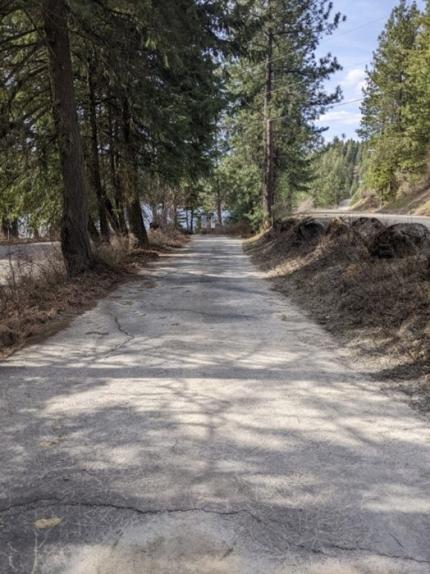
Providing Conflict Prevention and Education
Wolf Conflict: Natural Resource Technician Harris, Wildlife Conflict Specialist Bennett, and Sergeant Bahrenburg conducted a depredation investigation on a calf mortality in Stevens County. After investigating, they determined that the calf died from injuries sustained in a confirmed wolf depredation event. Due to overlap in several pack territories, they were unable to determine which pack was responsible for the depredation. Harris and Bennett deployed three Foxlights in the pasture to deter wolves. Harris assisted Bennett and Biologist Roussin to collar a wolf that was captured in a leghold trap in the pasture where the depredation occurred.
Cougar Concern: Wildlife Conflict Specialist Kolb responded to a complaint of a cougar defecating in a Walla Walla County homeowner’s yard. The homeowner believed it was a cougar because one was rumored to have been in the area over a year ago. After responding to the call and investigating the scat the homeowner was concerned with, Kolb determined the area was being used by multiple raccoons as a latrine site. The homeowner did say they enjoy watching the raccoons walk around the yard. Advice was provided.
Anatone Producer Meeting: Regional Director Pozzanghera, Wildlife Conflict Supervisor McCanna, Wolf Biologist Spence, Officer Delp and Wildlife Conflict Specialist Wade attended a meeting in Anatone to discuss recent wolf activity. Wade followed up with producers after the meeting. All the feedback from the producers was positive and they appreciated the chance to ask the team questions and express their concerns with the recent influx in wolf activity.
Turkey Habitat Project: Private Lands Biologist Hadley performed a site visit on a turkey habitat project where broadleaves were inter-seeded into a grass stand and cottonwood trees were planted. Evidence of germination of the seed was observed and the trees were starting to leaf out. Hadley spot mowed where dense areas of weeds were forming and watered the trees.
Conserving Natural Landscapes
Chief Joseph Weed Control: Wildlife Area Manager Dice sprayed a 15-acre field on Saturday with a tractor and boom sprayer to control common mullein and other broad leaf weeds growing in a field of predominantly native grass. The grass was seeded years ago by the former wildlife area manager as a demonstration site for the tri-state weed management area. The mullein was simply getting out of control.

Biologist Palmer and Natural Resource Technician Zueger conducted a Department of Ecology permitted field burn, eliminating dead plant material from a six-acre wildlife food plot. Agricultural Field Lessee Garris assisted with preparation by disking a dirt safety perimeter around the burn site. He also stood by with his tractor and disk during the burning to ensure the fire didn’t spread beyond the planned boundaries. This field is now prepared for cultivating and then replanting.
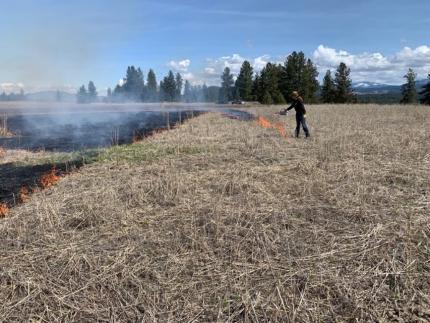
Field Spraying at the 4-O Ranch Wildlife Area: Wildlife Area Manager Dice sprayed 53 acres with glyphosate herbicide at the lower Bucannon fields on Thursday. The spraying is the first step for eventually seeding these fields to orchard grass. We have spent several years attempting to get a cover crop of grass growing on these fields. Covid 19 and associated work restrictions set us back two years, because we could not make timely applications of herbicide to prepare a seedbed. A seeding of alfalfa that was completed in fall 2021 failed due to frost heaving. Our plan is to plant the orchard grass in the next week or so and hope we get enough spring and summer moisture for it to survive and thrive.
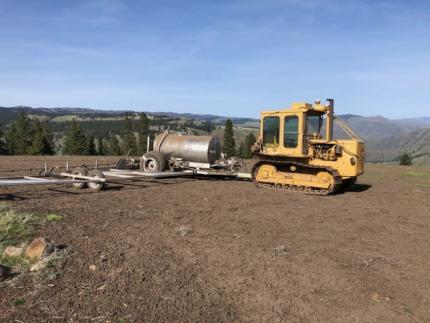
Deer Exclosures: Natural Resource Technician Harris assisted the Natural Resource Conservation Service and Ducks Unlimited to build a deer exclosures on a property in the wetland reserve program in Pend Oreille County. The exclosures will protect shrub seedlings from deer and elk browsing.
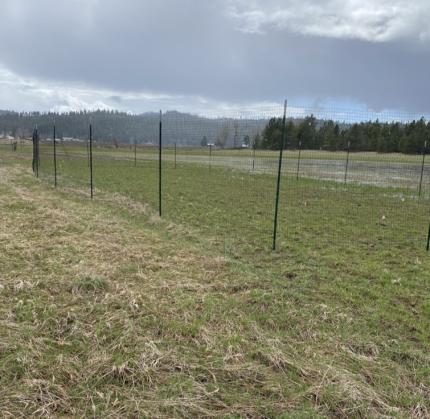
Invasive Grass Species Test Plots: Wildlife Area Manager Finch and Bureau of Land Management Spokane District Biologist Lowe were out to measure and divide three herbicide test plots. This work was conducted prior to a contractor and Botanist Emerich, who will be out to measure the plots for pretreatment. The goal is to determine the best and most economical post-emergence herbicide to treat invasive grasses while doing minimal damage to the native grasses and forbs. The plan is to use four different types of herbicides and Emerich will measure and document species prior to the treatment and post treatment which will be sometime early this July.
Providing Education and Outreach
Creston School Outdoor Science Grant: Wildlife Area Manager Finch, Habitat Biologist Mackelvie and Outreach and Environmental Specialist Eckenrod were out on Friday to meet the Creston 7th and 8th grade classes to work on their science grant. The classes came out in two different groups, one hour apart. This broke up the large group into two separate ones for the project instructions. Each class started with an orientation in the Swanson Lakes office. Finch gave the history of the Swanson Lakes Wildlife Area project and its relationship to the Bonneville Power Administration. Mackelvie spoke about the area’s plant diversity and provided detailed information about sage brush. Finch also gave a brief fire history and habitat restoration update to each class. Eckenrod helped the kids with their project and led a nature walk to help identify plants species.
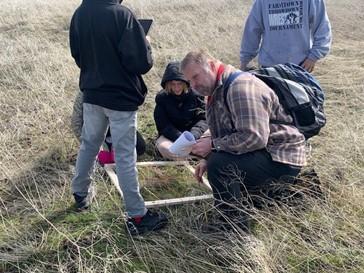
The Wildlife Society Presentation: Biologist Turnock presented at the Washington Chapter of the Wildlife Society’s annual conference in Centralia. The presentation was on survey work that has been conducted over the last two years for renewing our knowledge of bog lemming distribution within the state. The work was conducted with funding from the United States Fish and Wildlife Service (USFWS) and the information gathered was included as part of a Species Status Assessment compiled by the USFWS.
Conducting Business Operations and Policy
Wildlife Chemical Immobilization Training: Wildlife Biologists Prince and Turnock took a two-day chemical immobilization training from Dr. Mark Johnson with Global Wildlife Resources.
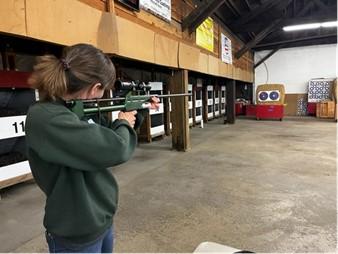
General Facilities and Equipment Maintenance and Repairs: This week a CAMP road construction crew and Construction Project Supervisor Hilton came with three dump trucks to work on the one-mile length of road leading to the Swanson Lakes Wildlife Area office. The work began on Tuesday morning with the trucks hauling out of Copenhaver Construction gravel pit just one mile west of Wilbur. It was decided that the road surface might perform better with one-and-a-quarter inch of material to the shop location and then from the shop to the office area using five-eighths minus. Hilton was able to give the road a crown in the center for better drainage and widen the road to the original width. Hilton also recommended limiting the speed people drive. This would make road maintenance much easier. Finch ordered four speed limit signs from the Washington State Department of Transportation that will limit speeds to 15 mph. They will be posted along the route to the office. It would be good practice to have their crew stop by annually when they are working in the area to grade it.
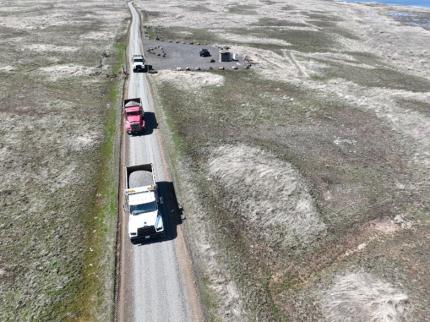
Other
Cougar Collaring, Kalispel Tribe: Biologist McCarty and Officer Copenhaver assisted with the collaring of a cougar near Newman Lake that was tracked and captured for research by the Kalispel Tribe.
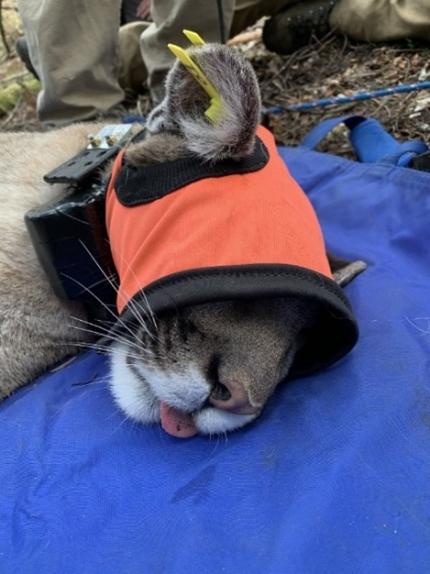
W. T. Wooten Wildlife Area Wildlife Plantings: Wildlife Area Manager Dingman picked up seed from Clearwater Seed to plant the Hartsock food plot this spring. Natural Resource Worker Jensen used the all-terrain vehicle to drag the food plot and remove the dead vegetation in preparation for planting. The Confederated Tribes of the Umatilla Indian Reservation gave us snowberry bushes. Natural Resource Workers Tritt and Jensen planted them along the edge of the food plot at the wildlife area headquarters. They also planted some pine trees in Campground 4 to try to replace the trees that were recently cut down by a member of the public.
Managing Wildlife Populations
Lynx Research: Biologist Fitkin and the Home Range Wildlife Research crew wrapped up the first season of captures for this three-year project. All told, three adult lynx (two males and one female) were fitted with radio-collars. The fourth and final animal captured (a subadult male) was still too light to carry a collar, but he was fitted with an ear tag and will hopefully become a radioed study animal next year. The primary objective of this multi-year project is to see how lynx are using the fire-impacted landscape across a gradient of fire scars of different ages. Results will inform forest and fire management strategies which will help maintain adequate lynx habitat in the face of growing wildlife risk. More information on this project and the locally grown Home Range organization can be found on their website.
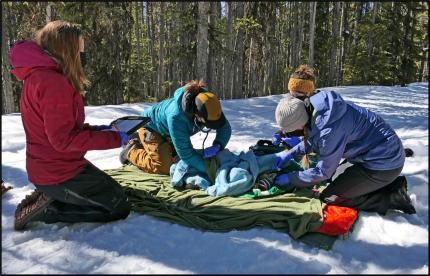
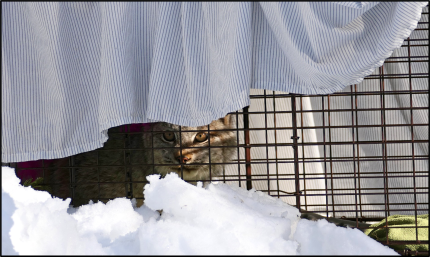
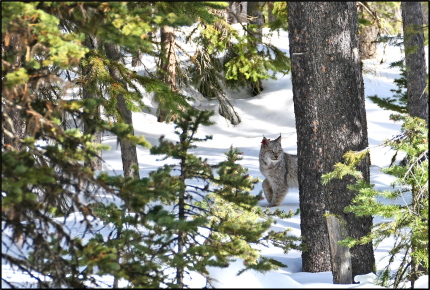
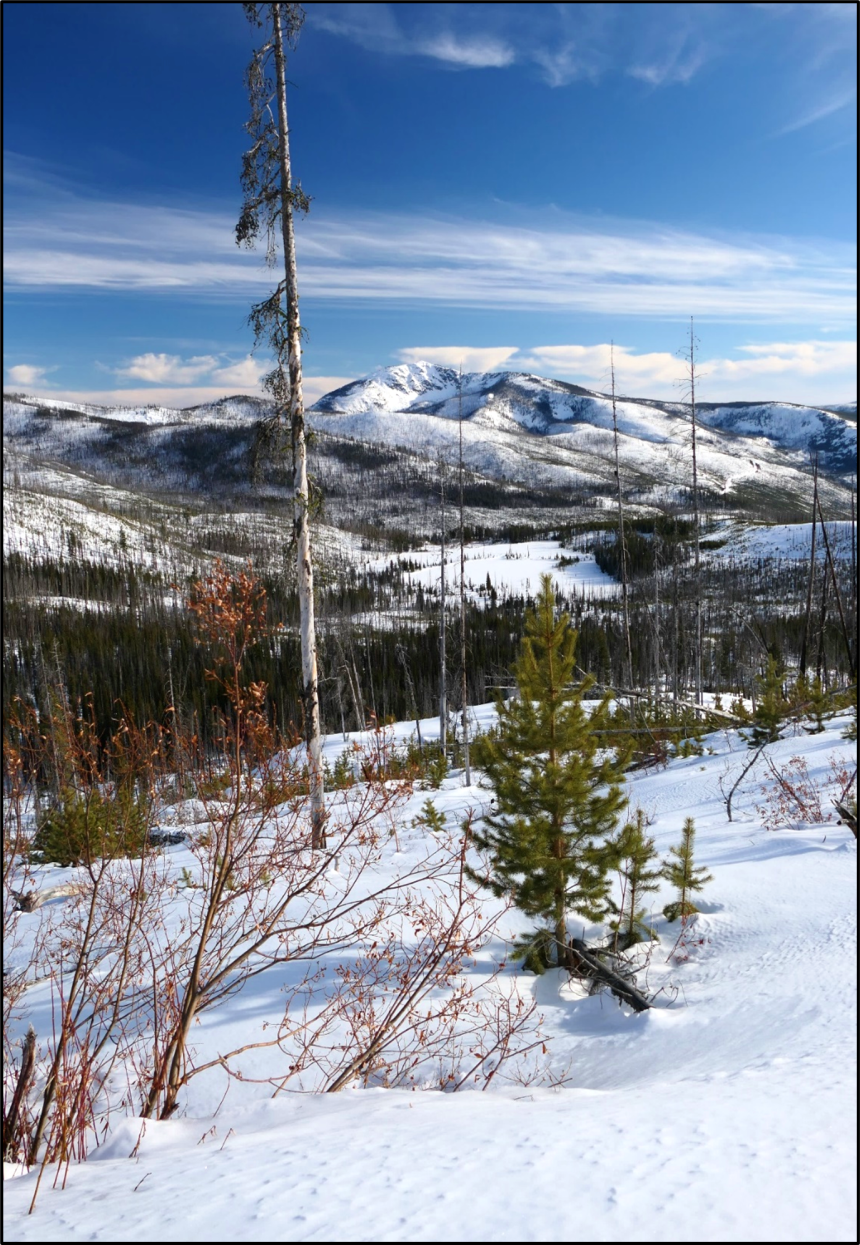
Mule Deer Monitoring: Biologists Fitkin and Heinlen began spring mule deer surveys. They have also been following up on mortalities and dropped collars from current study animals with the help of Volunteers Fisher and Rohrer. Spring is coming slowly to District 6 and early data collection suggests fawn to adult ratios are lower than average, although several surveys are still pending.
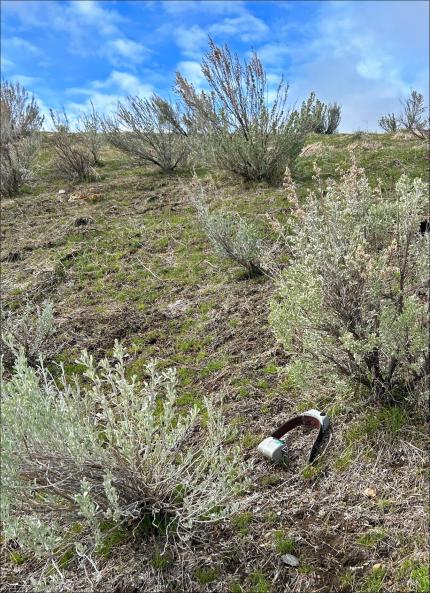
Mule Deer: Biologist Eilers responded to a mortality signal from one of the GPS-collared mule deer in the Number 2 Canyon area of the Wenatchee foothills. This doe was collared as an adult in January 2022. Upon arriving onsite, Biologist Eilers was quickly able to determine that she had been killed by a cougar. Eilers retrieved the collar for future refurbishment and redeployment elsewhere and collected a tooth sample to determine her age at death.
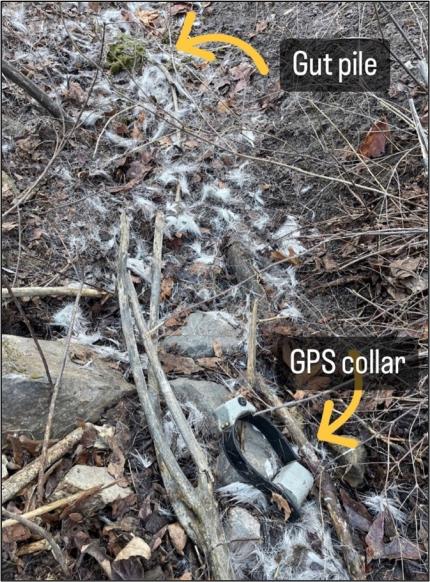
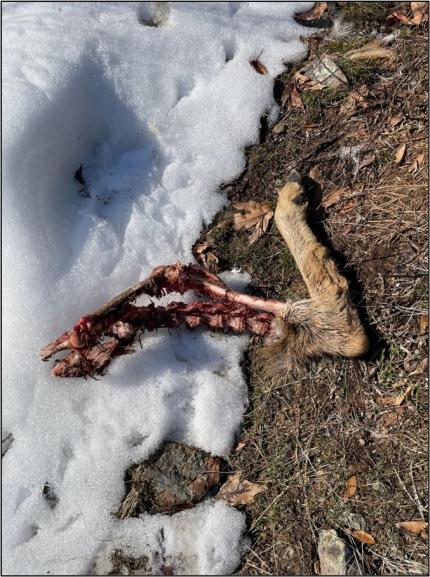
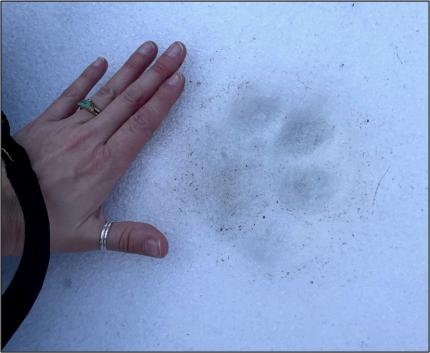
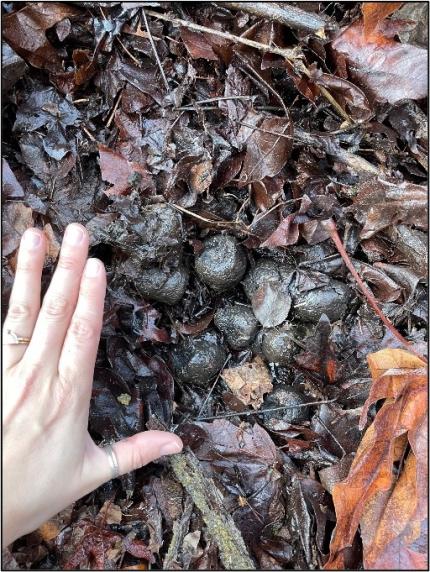
Wolf Monitoring: Biologist Jeffreys joined Wolf Biologist Roussin on a backpacking trip on the Lake Shore Trail of Lake Chelan to retrieve trail cameras and look for evidence of a wolf pack inhabiting the area. WDFW biologists and North Cascades National Park have received numerous reports of wolves in the Stehekin area over the past couple of years. In the winter of 2020 and 2021, park staff captured images of two adult wolves and four yearlings via trail cameras in the eastern portion of North Cascades National Park suggesting the presence of up to six wolves.
Biologists Jeffreys and Roussin took the ferry to Prince Creek and hiked from there to Stehekin. They meandered up side trails along the way in search of wolf tracks and scat. They also retrieved two cameras placed near Prince Creek earlier this winter, but no photos of wolves were captured. This area represents great mule deer winter range and the biologists observed many deer as well as tracks of elk, moose, and mountain goat. However, over the course of the three-day trip and over 20 miles of trails hiked, biologists only found tracks belonging to a single wolf. That means the most that can be said of this area for now is that it’s a lone wolf territory. The biologists plan to search other trail systems in the North Shore and Stehekin areas in the future to determine if there is indeed a wolf pack there.
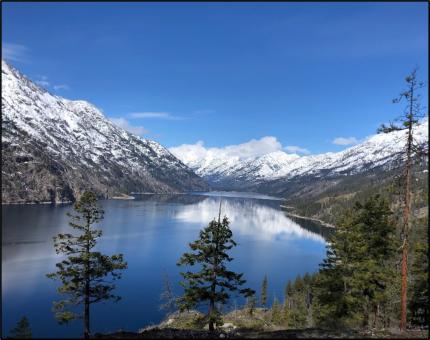
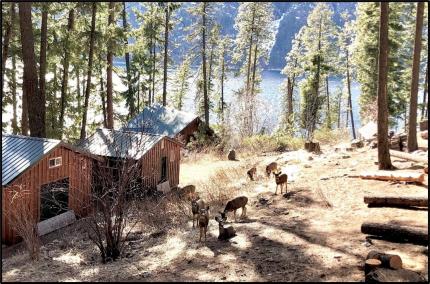
Sharp-tailed Grouse: Staff members surveyed the riparian areas around Scotch Creek for sharp-tail grouse. One sharp-tailed grouse was observed foraging in the water birch.
Sage Grouse Surveys: Private Lands Biologist Braaten began grouse count surveys but found very few due to lack of access as many roads are still blocked with snow. Temperatures are warming and snow is melting so we hope to be on the leks very soon. Many roads are just now opening up and providing access. Sage grouse are attending most leks.
Biologist Eilers scouted road accessibility to reach some of the Douglas County sage-grouse leks. Many of the roads are still inaccessible due to snow and muddy conditions but Biologists Jeffreys and Eilers were able to complete their first lek count for the 2023 survey year in the Badger Mountain area. In recent years, this lek has consistently been the most well-attended with up to 30 males displaying on some mornings. It’s off to a good start this year with a count of 25 males and two females.
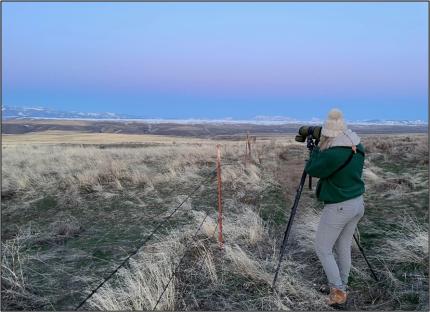
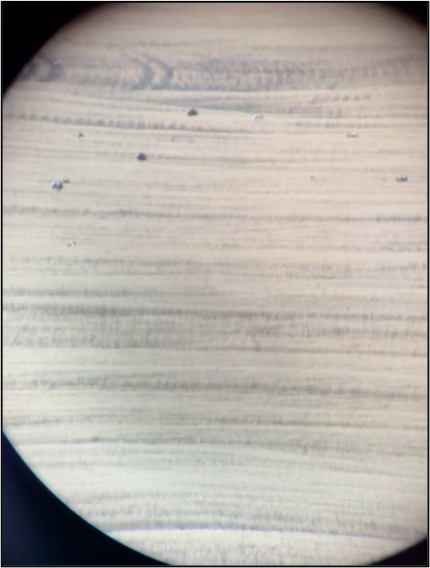
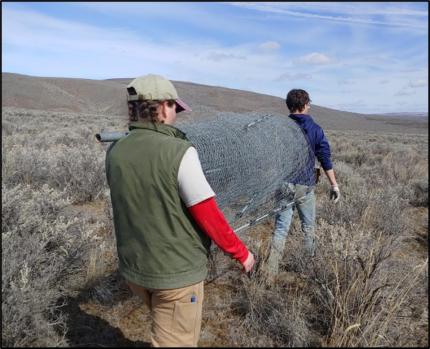
North American Lagomorph Working Group: A new cooperative lagomorph working group, comprised of representatives from state agencies, tribal agencies, federal agencies, universities, and non-government organizations has been formed. The cooperative working group will identify conservation and management priorities for North American lagomorph species. They will increase cross-state communication, collaboration, and consistency in monitoring. They will also facilitate disease monitoring and management coordination. At the latest meeting, Biologist Gallie presented “Breeding like rabbits: a 20-year history of captive breeding and reintroduction efforts.” Gallie spread awareness of the challenges that have faced the pygmy rabbit recovery project throughout the years and the solutions that have been created in the face of those challenges.
Building Release Pens: The 2022–2023 Rimrock Meadow release pens have been torn down and relocated with the help of the Washington Conservation Corp. Approximately one acre in size, these pens are designed for the soft release of enclosure-born pygmy rabbits. The pens slow the dispersal of pygmy rabbits and help increase survivorship. With the new pens all set up, the pygmy team is looking forward to kit season. It’s just one month away!
New Release Sites: The Black Rock Coulee area has dense intact sagebrush stands that are perfect pygmy rabbit habitat. Meetings with the Bureau of Reclamation have begun so that future controlled burns will avoid burning mature sagebrush critical for pygmy rabbit reintroduction efforts.
Providing Recreation Opportunities
Hunter Access Program: Biologist Morris continued working on updating hunter access contracts so that there are no issues. Morris also checked signs on several properties and replaced signs that were broken or defaced.
Recreation & Partnerships: The Methow Wildlife Area is partnering with Western Washington University to host an intern who’s interested in conservation as well as recreation. It’s anticipated that this intern will assist with a wide variety of land management tasks, including intensive surveys of recreational infrastructure that exist on the wildlife area.
Additionally, Methow Wildlife Area staff members connected the project lead for the Methow Valley Trails Collaborative (MVTC) with WDFW recreation staff. The goal is to initiate a contract with MVTC to assist local wildlife area personnel with surveying trails to identify their maintenance needs. This information will eventually be rolled into a cultural resource survey so future maintenance and upkeep can occur.
Lastly, the MVTC has offered the resources of a National Civilian Community crew to assist with a local Methow Wildlife Area project or two this spring. It’s likely this crew will aid Methow Wildlife Area staff members in combatting erosion issues at Lewis Butte and possibly assist with the installation of a buck and rail fence near a stream that parallels a popular camping area.
Providing Conflict Prevention and Education
America the Beautiful Challenge: Okanogan Lands Operations Manager Haug worked with Okanogan Land Trust Executive Director Miller and various WDFW staff members regarding the development of a proposal for the America the Beautiful Challenge grant offered by the National Fish and Wildlife Foundation. Potential grant funding could include additional support for species mobility, habitat conservation, and restoration funding in the Okanogan area.
Cooperative Burn: Department of Natural Resource staff members and wildlife area personnel along with WDFW Prescribe Burn Program Lead Eberlein met and did a walk-through tour of the planned prescribe burn area for this spring. The prescribed burn will finish up the remaining units of the burn that was treated last year. The prescribed burn units include both Department of Natural Resource and WDFW lands within the Sinlahekin Unit.
Forest Thinning: Scotch Creek staff members and the North Central Washington burn team resumed thinning the forested portions of the Similkameen-Chopaka Unit. The goals of the thinning are to restore historical stand densities, and reduce conifer encroachment into Cottonwood galleries, Aspen groves, and shrubsteppe habitats and to rearrange fuels closer to the forest floor. The thinning will prep the forest for a future prescribed burn.
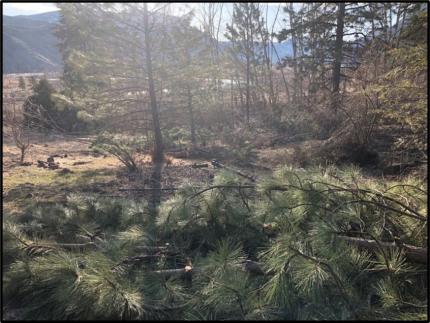
Habitat Management: Assistant Manager Riley created a proposal for the 2023-2025 Waterfowl and Migratory Game Bird Habitat Project grant through the Migratory Waterfowl and Wetlands Conservation Program. We hope that if we receive this grant, it will help treat invasive tree species (Siberian Elm and Russian Olive) and other weed species on the Driscoll and Eyhott Islands units to improve riparian habitat for waterfowl.
Salmon Restoration: Lands Operations Manager Haug had several conversations and meetings regarding multiple salmon restoration projects within the Methow Wildlife Area. The projects are in various stages of development, have aspects that pose challenges to land management staff, and raise concerns with both the Habitat and Fish programs. WDFW personnel are working closely with one another to provide input to the project proponent so they can address these concerns and move forward with the restoration work.
Wildlife Conflict Bootcamp: Wildlife Conflicts Specialists Bridges and Heilhecker with Supervisor Rickel attended the three-day Wildlife Conflict Bootcamp workshop that focused on implementing Human-Carnivore Interaction Response Training.
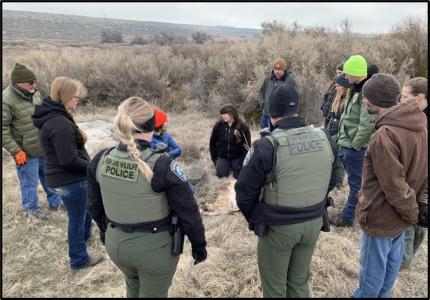
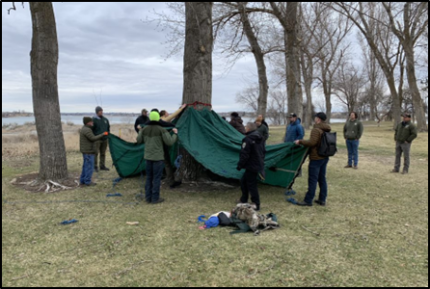
Conserving Natural Landscapes
Habitat Plots: Biologists Morris and Cook met with a landowner that is interested in habitat restoration efforts on their land. Options for potential habitat projects were discussed and how WDFW could help with the projects was explained. Standby for next steps.
Biologists prepped a few supplemental food plots near Royal City by mowing vegetation growth from last year. Further plot preparation is still needed, which will include herbicide application and seeding. These plots have sandy soils so Cook will add wood chips, from trees removed from the Region 2 office, to increase organic matter and hopefully build the soil.
In addition, biologists planted a wildlife habitat plot in a circle corner.
Cook broadcast native seed via a broad-cast spreader mounted on an all-terrain vehicle and a drag. Morris followed behind and harrowed to incorporate the seed into the soil. This planting was delayed from last fall due to snow. This plot should provide quality permanent nesting cover for upland birds when it is established.
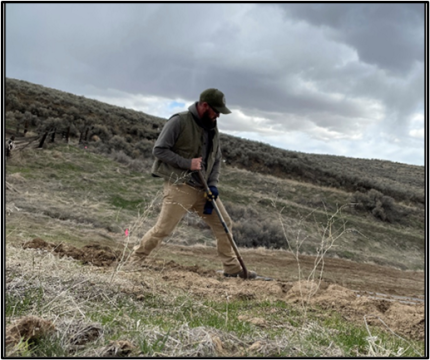
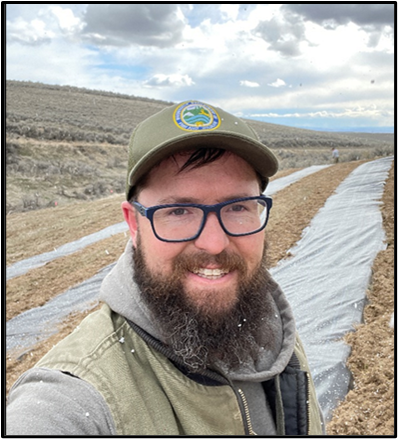
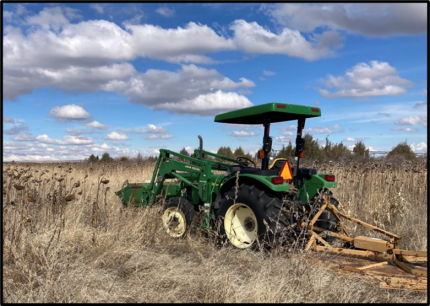
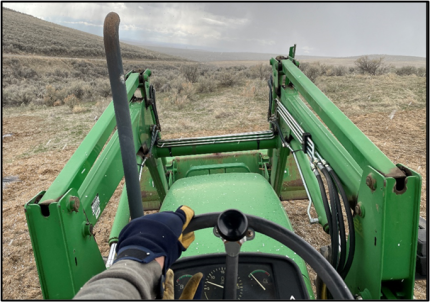
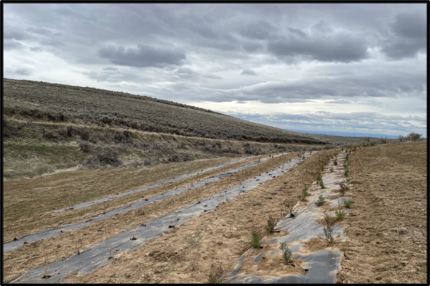
Oroville High School Field Day: Staff members joined Oroville High Schools Greenhouse Management Teacher Vanderwal and four of her students collecting willow stakes and cuttings on the Scotch Creek Unit. The cuttings and stakes were transported back to the high school greenhouse for further processing. When processing is completed, the students will use the cuttings and stakes on a riparian restoration project along Tonasket Creek on the Charles and Mary Eder Unit.
Douglas County State Acres for Wildlife Enhancement Conservation Reserve Program Update: Private Lands Biologist Braaten coordinated with staff on Natural Resources Conservation Service (NRCS) planning and contribution agreement issues. There is continuous dialogue with upper management about what WDFW has received out of the agreement. The lack of assistance and support by Farm Service Agency and NRCS continues to be an issue and significantly impacts the ability for WDFW to complete their portion of the work.
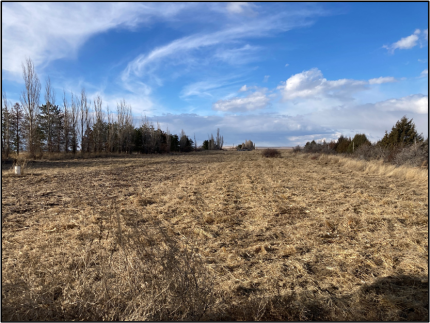
Providing Education and Outreach
Education in the Classroom: Biologists Morris and Cook and a Pheasants Forever biologist met with nine seniors from Othello High School that wanted to learn more about working for WDFW and what it takes to have a career as a wildlife biologist. Morris and Cook talked to them about education requirements, and the pros and cons of the job. They also spent time outside observing and discussing wildlife and their habitats.
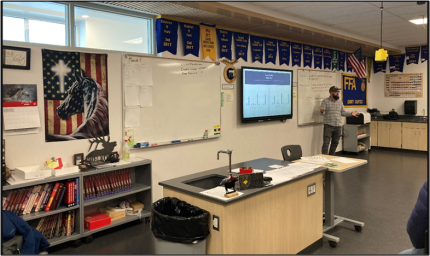
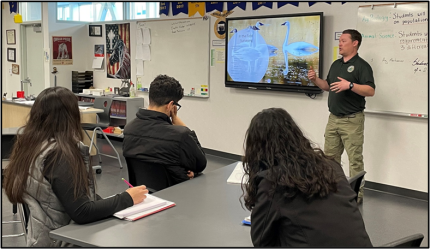
Morris and Cook gave a presentation to the Quincy High School Agricultural Biology class on how WDFW tracks wildlife population changes and why those changes occur.
Conducting Business Operations and Policy
Acquisitions and Easements: Private Lands Biologist Braaten provided information for acquisition discussions and consideration. He also met with a landowner interested in selling some of his land to WDFW.
Agricultural Leases: Lands Operations Manager Haug met with Stewardship Section Manager Walls and Range Specialist Burnham to discuss a Methow Wildlife Area agriculture lease renewal and various other agricultural leases. This began the discussion on determining future rates to each lessee. More work to come this year on the subject.
Agriculture and Grazing: Methow Wildlife Area staff members hosted their first Coordinated Resource Management (CRM) planning meeting of the season. These meetings are coordinated primarily by the permittees and the Okanogan Conservation District. Other attendees typically include representatives from the United States Forest Service, Department of Natural Resources, State Parks, and Bureau of Land Management. Like many of our local grazing permits, a primary goal of this specific permit in the Methow Unit is to benefit habitat for migrating and wintering mule deer. Managed cattle grazing on the approved scale, with comparable stocking rates, and prescriptions should promote or maintain the growth of woody forage used by mule deer.
The Methow Wildlife Area is also working towards the renewal of an agricultural lease near Pipestone Canyon in the Methow Unit. This irrigated lease has three high efficiency, center pivots installed. The goal of this lease is to provide food and cover for wildlife, to provide sharecropping opportunities for the public that are consistent with fish and wildlife objectives, and to make beneficial use of the water rights. Specific wildlife benefits include food and cover for migratory mule deer and forage for upland birds, waterfowl, and black bear to name a few. The crops grown on this lease will provide a high quality, varietal supplement to natural forage sources, particularly going into winter.
Additionally, in the next few weeks, the Methow Wildlife Area hopes to advertise a bid for an irrigated agricultural lease at the Big Valley. One of the primary goals for this lease will be to benefit sandhill cranes that tend to nest in a nearby wetland and are known to use this field for forage and cover with their juveniles. This lease would benefit various other wildlife such white-tailed deer, turkeys, and waterfowl.
District Team Meeting: North Lands Operations Manager Haug led this quarter’s district team meeting. The meeting included two guest presentations by CAPE Communications Outreach Specialists Eckenrod and Desautels who provided an overview of Habitat at Home and some of the science curriculum being developed by the new division. Participants then provided updates from their work units and the group fielded several questions.
Eder Tower: Lands Operations Manager Haug, Scotch Creek Wildlife Area Dupont, and Properties and Acquisitions Specialist Huynh met with a representative of the Okanogan County Sherriff’s Office to discuss the possibility of deploying a communications tower on the Charles and Mary Eder Unit. Staff members asked for additional information and provided the official with an idea of what the request would take in terms of time and effort. The placement may be approximately two to three years out according to their representative and depends on whether or not their request is funded.
Landowner Permitting Database: Specialist Heilhecker participated in a subcommittee meeting regarding the new database for issuing landowner permits. The database they tested last month does not meet the needs of the Wildlife Conflict Program. Therefore, Information Technology is looking at options
Maintenance: Sinlahekin staff members continued to prepare equipment for the upcoming field season. Natural Resource Specialist White has been fabricating axles and hydraulic lift for the harrow seeder that will be used to seed native grass seed on some shrubsteppe restoration sites on the Chiliwist Unit. Staff members will continue with other maintenance activities. They also started annual maintenance of the access site parking lots through the various units of the wildlife area. This treatment will help prevent noxious weeds from growing in the parking lots and help to minimize potential fire hazards.
Maintenance: WDFW personnel removed a large inline irrigation filter from one of the center pivot bases. The filter was starting to rust out from years of use. The filter is no longer needed because the water supplying the pivot is pumped from a well and sediment is no longer an issue. The pivot was replumbed from the mainline.
Meetings: Specialist Heilhecker and Private Lands Biologist Braaten and Supervisor Rickel participated in the Okanogan District team meeting.
R2N Virtual Tour: Lands Manager Haug presented to the Lands Division quarterly meeting a virtual tour of wildlife areas and water access areas in Okanogan County. The presentation mainly discussed wildlife and water access areas and touched on successes and challenges. The virtual tours will hopefully become a standard segment of each meeting.
Sealing: Private Lands Biologist Braaten sealed two bobcats and a river otter. Information was downloaded to Convention on International Trade in Endangered Species (CITES) application.
Training: Most of the Region 2 north lands personnel participated in an annual Wildland Firefighter Refresher Course (RT-130). This course is mandatory for staff members to maintain their red card certification for wildland firefighting and prescribed burning. The course was taught by Burn Specialist Eberlein of the WDFW Prescribe Burn Program.
Sinlahekin and Scotch Creek staff members participated in an annual pesticide recertification class. These classes are needed to maintain their certification and licenses so that they can continue to use herbicides to control noxious weeds on the wildlife area.
Wolf Advisory Group Meeting Preparation: Specialist Heilhecker participated in a Wolf Advisory Group (WAG) coordination call to plan the April WAG meeting. The WAG is a citizens’ committee that advises wolf policy related issues.
Pivot Clean Up: In 2020 a windstorm blew over the south pivot on the Chopaka Unit. The severely damaged pivot was dismantled and stacked in the corner of the field, spring of 2020.
This week staff members removed all the tires, gear box, center drives, drive lines, and hauled them to the Eder Unit for storage and reuse.
The remaining large pieces of metal and pipe will be picked up by the WDFW construction shop later this spring for recycling.
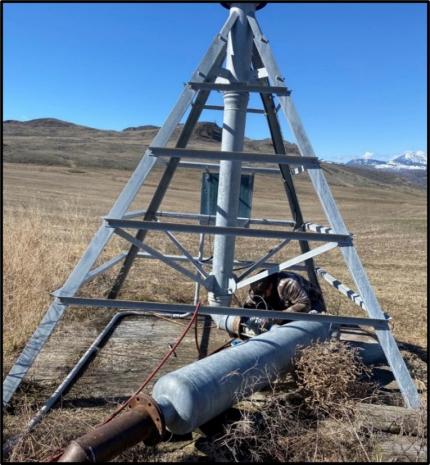
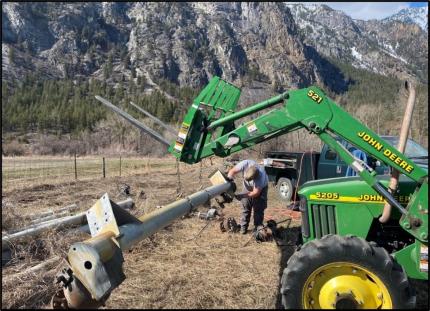
Deck Repair: Scotch Creek staff members replaced all four posts that were supporting the awning covering the back porch of the office. The old posts were starting to deteriorate and compromising the integrity of the awning. Staff members also replaced the deck boards and cover to the domestic well.
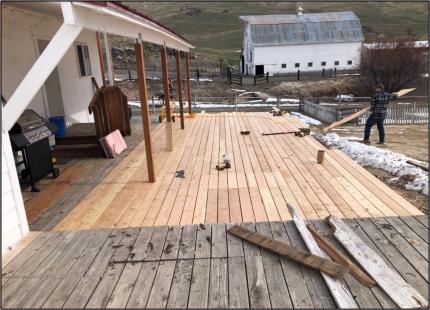
Other
Migrating Waterfowl: Snow geese and other waterfowl can be seen and heard almost daily flying over Ephrata on their migration north. It’s a good sign spring is on the way.
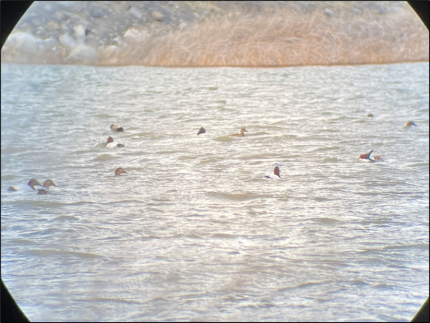
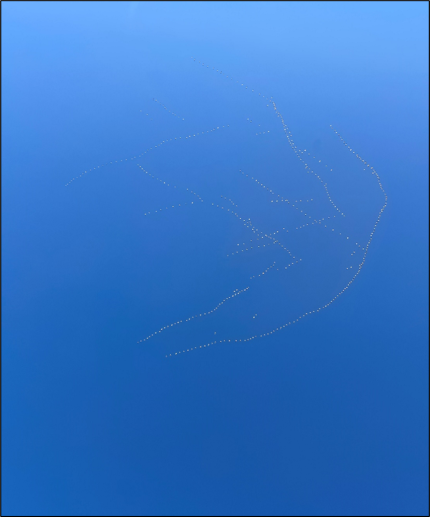
Hiring of Natural Resource Technician: The advertisement for two natural resource technician positions closed, and six candidates were forwarded for consideration. Application material for each candidate was evaluated by staff members and interviews were scheduled. These two positions will assist with the increasing workload associated with Farm Bill support as well as increasing maintenance needs for habitat plots installed by private lands biologists.
New Technician: District 7 biologists just welcomed a new biological technician onto their team for the 2023 summer season. Sophia Hara will be assisting in greater sage-grouse and sharp-tailed grouse lek counts and lek surveys as well as upcoming Washington ground squirrel surveys.
With additional help private lands biologists expect to install added habitat and maintain Hunter Access property signs more efficiently each year.
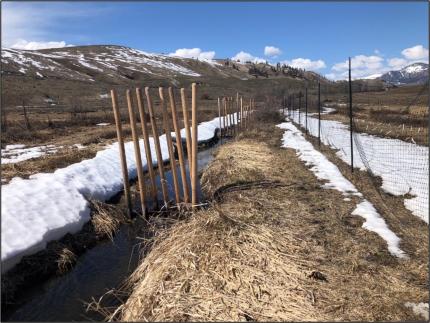
Weather Conditions: What a difference a day can make! The snow was slowly leaving the Sinlahekin Wildlife Area and its units. Most of the south facing slopes were baring up, then we received approximately four new inches of snow within 24 hours. Temperatures have still been hovering around freezing with a few days of highs in the low 40s, but mostly sunny. The few days of above freezing temps have allowed staff members to get out and do some field work prep for this coming spring, which they are anxiously waiting for.
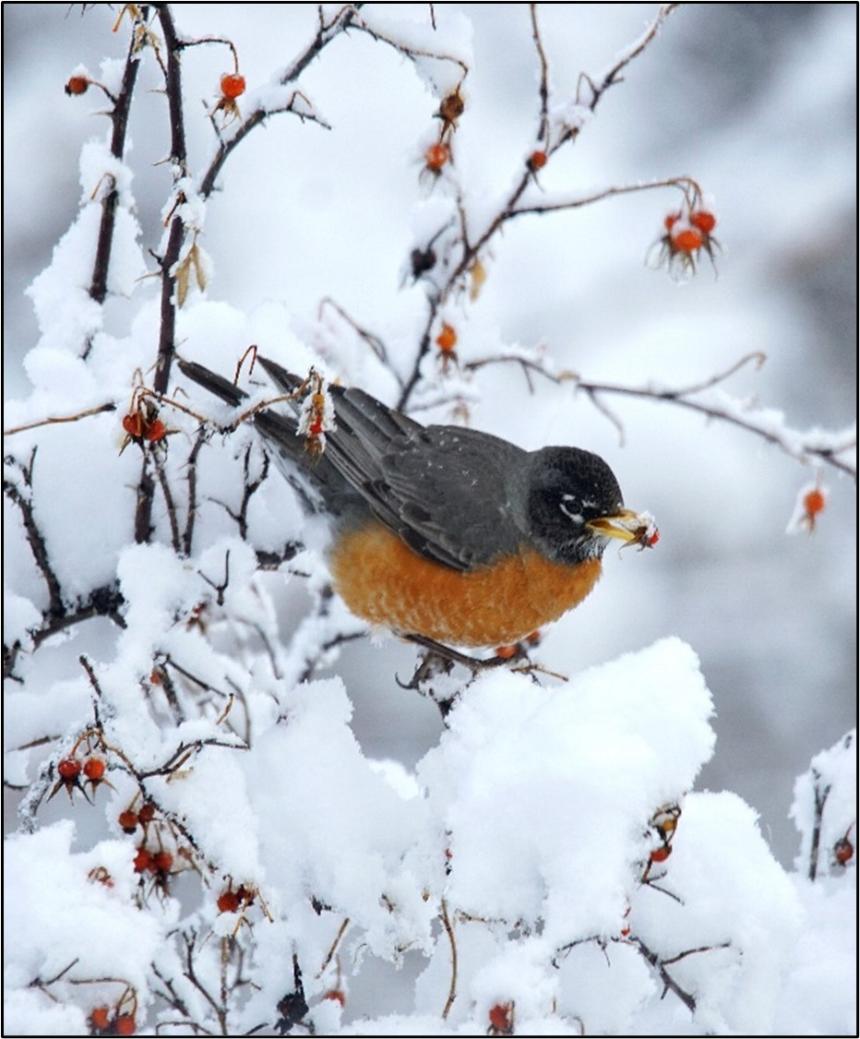
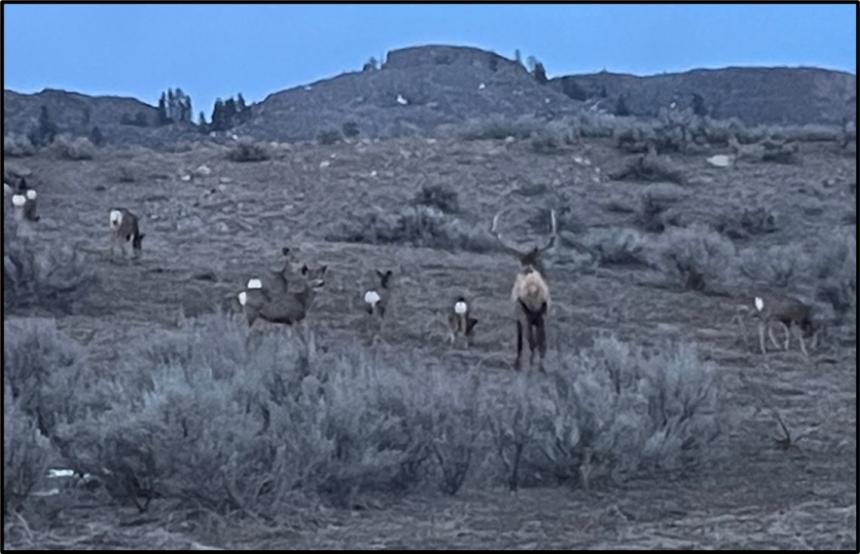
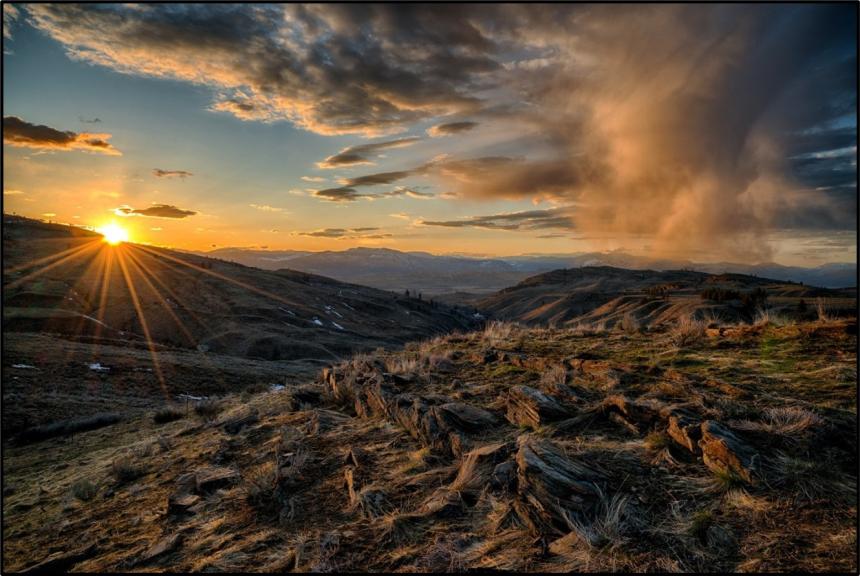
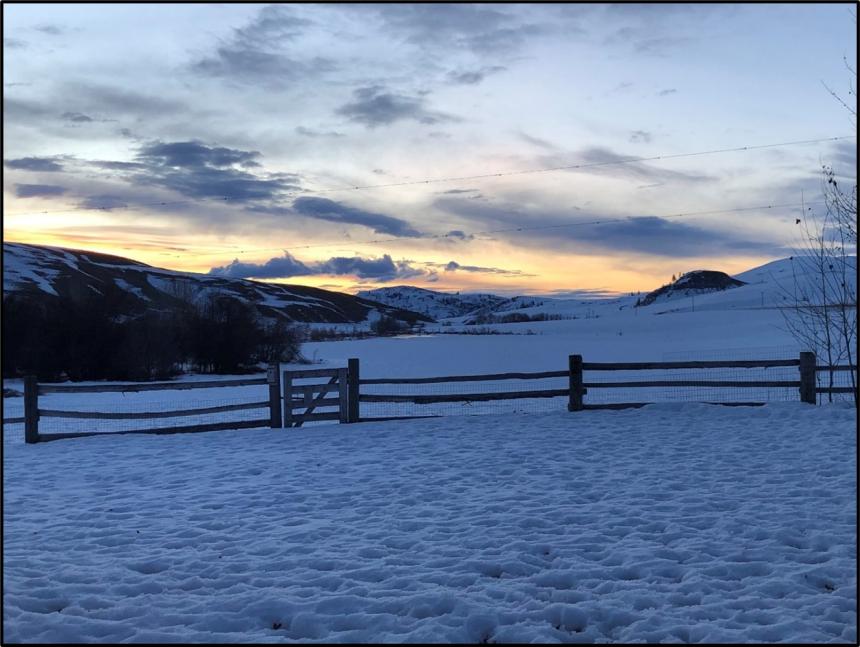
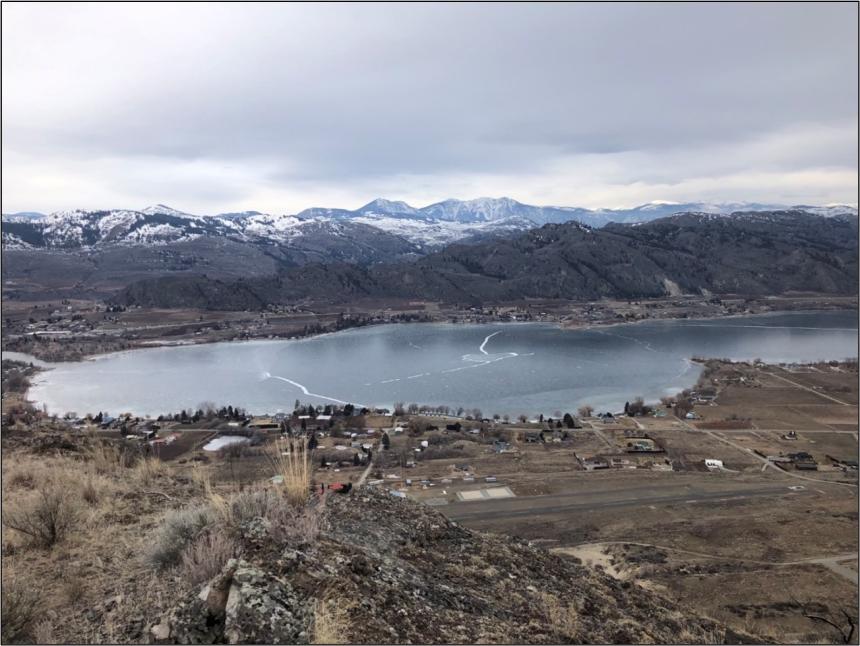
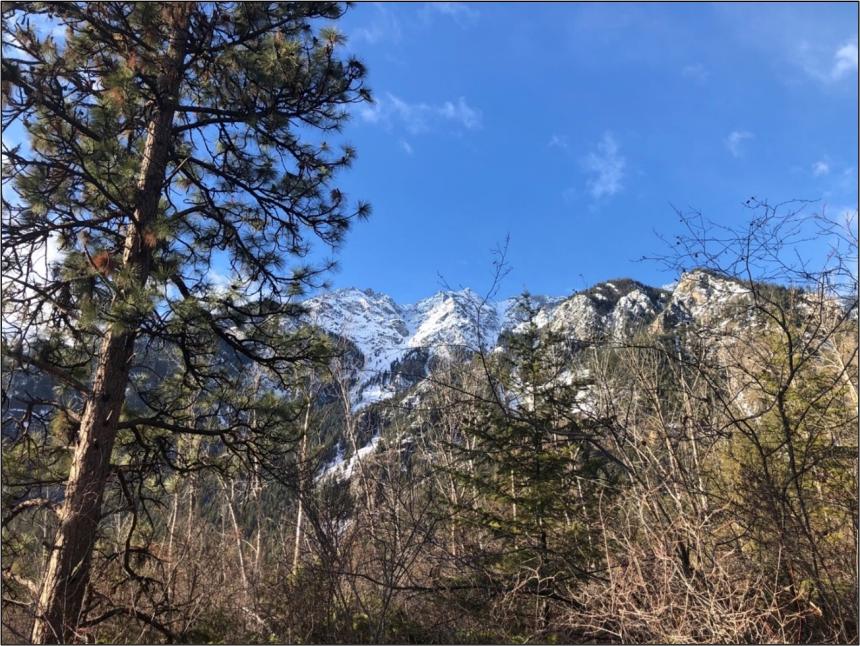
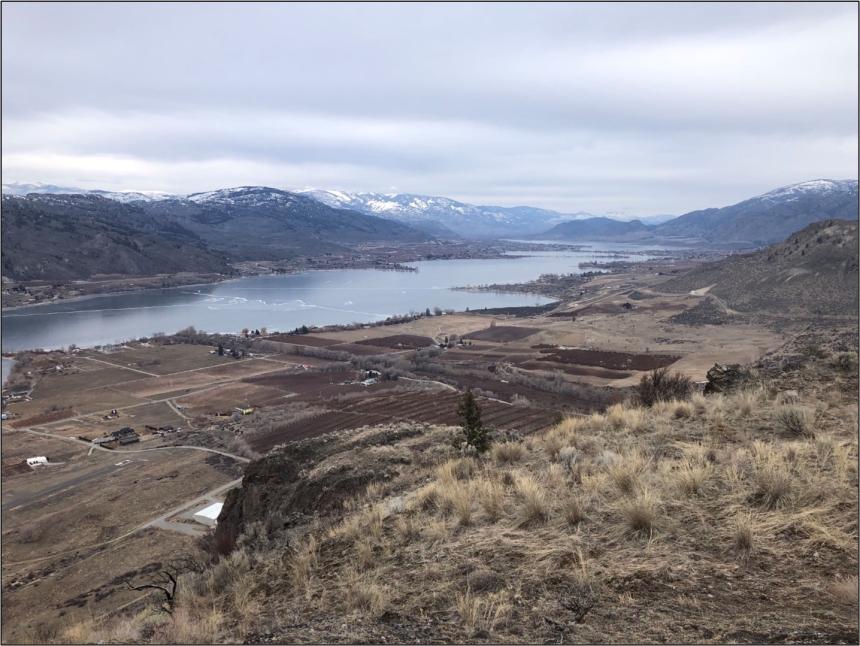
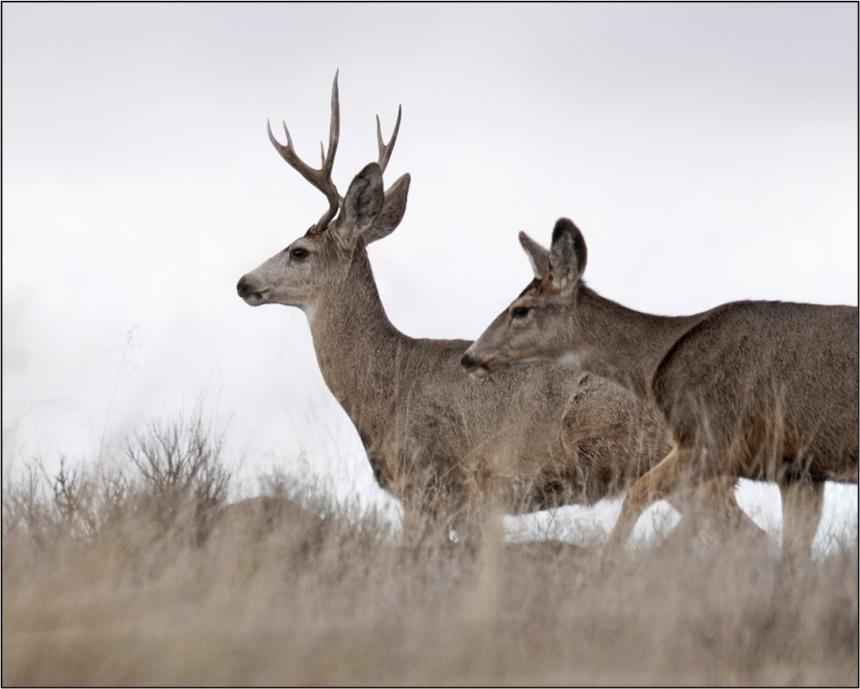
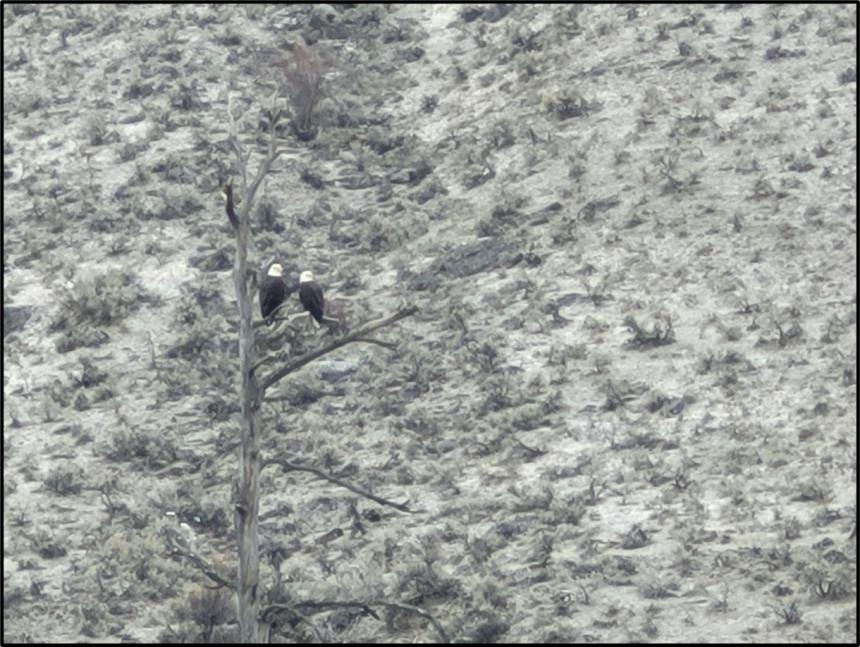
Managing Wildlife Populations
Bighorn Sheep Surveys: WDFW biologist, regional conflict specialists, wildlife area staff, and ungulate specialists teamed up to conduct two mark-resight surveys of bighorn sheep in the Yakima Canyon. Surveys are conducted by visually identifying bighorn sheep and quantifying the number of marked animals (wearing GPS collars) and the total number present. Staff members also collect data on the sex and age composition of observed groups. This survey provides an estimated population size and importantly 2022 lamb recruitment. This data will be utilized for the Test and Remove study that began earlier this year to address concerns of prevalence rates of mycoplasma ovipneumoniae (MOVI).
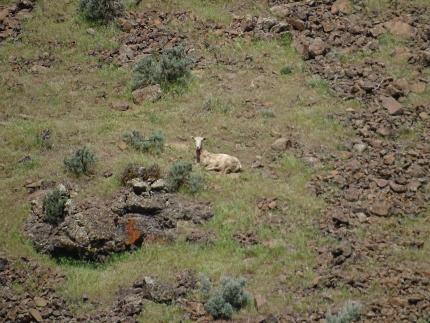
Bear Density Surveys: Black bear density surveys were approved to be carried out early this summer in District 8. Non-invasive hair snag sites will be set in the region of Oak Creek Wildlife Area and Okanagan-Wenatchee National Forest. This data will provide estimates of bear density locally and improve efforts to understand variation in black bear density statewide. See Washington Department of Fish and Wildlife. 2022. Statewide Black Bear Density Monitoring in Washington: A cross-region and interagency team approach.
White-trailed Jackrabbit Sightings: L. T. Murray staff members saw two white-tailed jackrabbits on the Whiskey Dick Unit. That makes four white-tailed jackrabbits seen on the Whiskey Dick Unit this year. The first was mistaken for a cottontail rabbit and shot by recreators at Whiskey Dick Bay but the remaining three were spotted in April alive and healthy.
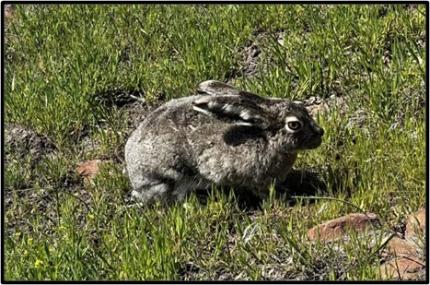
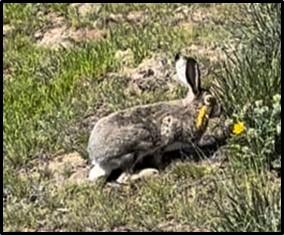
District 8 Wolf Activity: Individual wolves, both collared and uncollared, are leaving and arriving in the district at this time. It is suspected that they will remain transient for some time.
Providing Conflict Prevention and Education
Rattlesnake Hills Elk: Wildlife Conflict Specialist Hand had contact with landowners on Rattlesnake Mountain concerning the elk activity, damage occurrence, and damage permit issuance. Summer bull damage prevention permits were developed and will be distributed to landowners in the next couple of weeks. These permits provide hunting opportunity during critical wheat growth development while aiding in hazing elk back to the Hanford National Monument.
Kahlotus Deer: Wildlife Conflict Specialist Hand conducted deer monitoring and damage inspections at a couple of dryland wheat farms in Game Management Unit (GMU) 381. Very few deer were observed, and damage impacts appear to be reducing.
Kittitas County Wildlife Conflict: Conflict Specialist Wetzel worked with several hay growers who were having problems with elk in crops. Elk were hazed from irrigated hay, row crops, and at haystacks. One elk near a garlic field died from pneumonia complications.
Yakima County Wildlife Conflict: Conflict Wetzel worked with several hay growers who were having problems with elk in crops. Elk have been hazed from irrigated hay, row crops, and orchard areas. One elk near an irrigated field died from unknown causes.
Fence repairs are underway in West Valley. It is likely winter snow caused the elk fence to fall over in that area. Repairs were also needed at un-permitted entry points that adjacent landowners have cut into the elk fence.
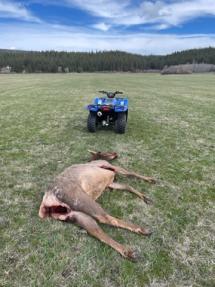
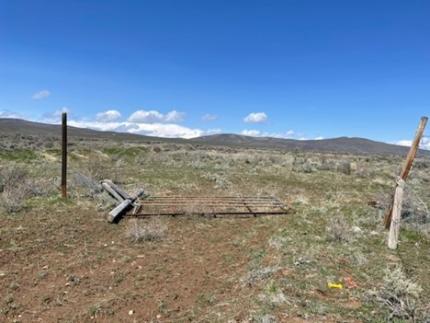
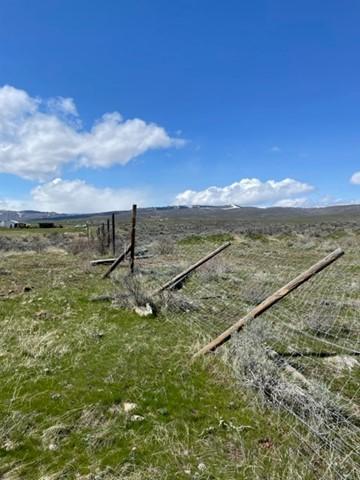
Conserving Natural Landscapes
L. T. Murray Pedestrian Surveys: The L. T. Murray staff members, Off-road Vehicle Education Specialist Schrauth, and state foresters assisted a cultural resource specialist with pedestrian surveys within the 2022 Vantage Highway Fire footprint. Among the lithic scatter found was an arrowhead which is believed to be between 200 and 2,000 years old. The arrowhead was documented and reburied at the site. A few hundred acres have now been surveyed and will be available for planting this fall.
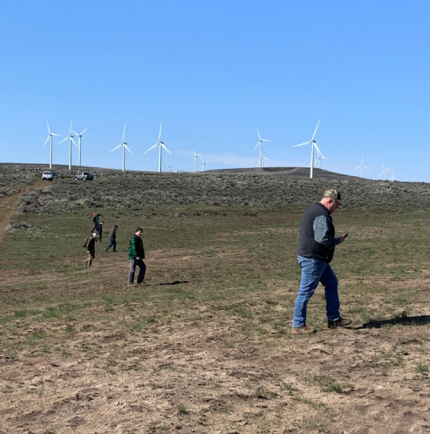
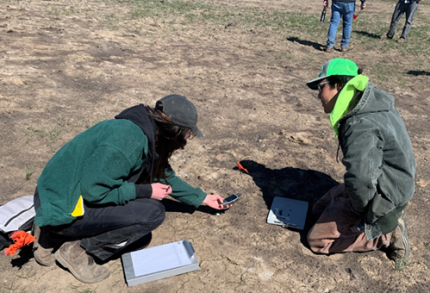
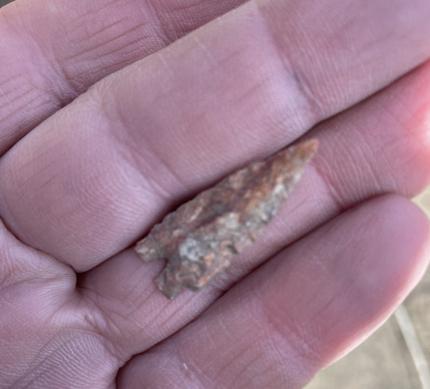
Petrified Wood: While crossing state parks through the Recreation Drive access point, L. T. Murray staff members found six bags of petrified wood in the road. Assistant Manager Winegeart contacted a very grateful John Ernster with State Parks who requested Winegeart fill out a witness statement and then had State Parks enforcement investigate and file a criminal report.
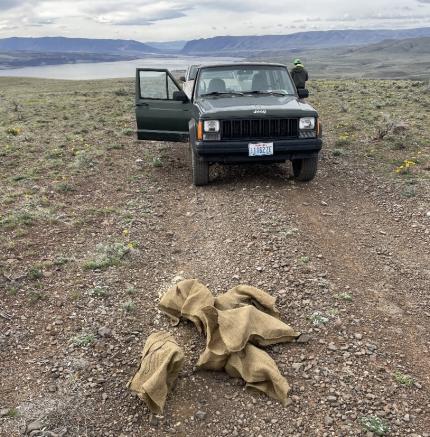
L. T. Murray Grazing: Wildlife Area Manager Morrison and Assistant Manager Winegeart performed pre-grazing monitoring in the Lower Parke pasture of the Quilomene Unit’s grazing lease.
Providing Education and Outreach
Back Country Hunters and Anglers: Assistant Manager Winegeart met with the president of the local chapter for Back Country Hunters and Anglers and discussed upcoming volunteer opportunities on the L. T. Murray Wildlife Area.
Stuck Vehicle in Wenas: Off-road Vehicle Education Specialist Schrauth came across a stuck off-road vehicle while on patrol in the Wenas Wildlife Area and assisted with the removal of the vehicle. Education was also provided on proper use of the Green Dot Road system as well as proper recovery equipment, communication standards, and recovery efforts safety.

Sunnyside and Snake River: Assistant Manager Jahns and Natural Resource Technician Manderbach had the pleasure of participating in the 25th annual Salmon Summit at Columbia Park. Thousands of elementary students from the Tri-Cities and surrounding areas released their classroom salmon into the Columbia River and rotated through stations to learn more about fish, wildlife, and natural resources in Washington. WDFW’s “Pelts & Skulls” station was a huge hit with the kids. They learned about the importance of wildlife habitat, native fish, and wildlife species during the interactive, hands-on lesson. Thank you, Communication Manager Lehman and Customer Service Specialist Tucker for helping at the booth as well.
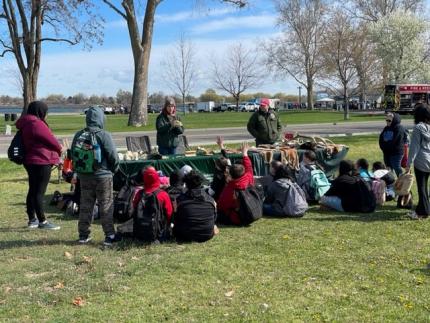

Natural Resource Technician Manderbach and Habitat Biologist Maikis attended a career night at Leona Libby Middle School in West Richland. They were able to teach students and community members about fish and wildlife in Washington and potential career opportunities with WDFW.
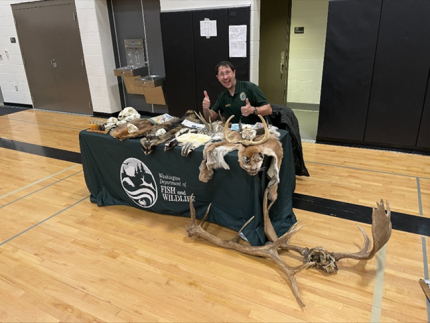
Other
Sunnyside and Snake River: Manager Kaelber, Assistant Manager Ferguson, and Natural Resource Technician Manderbach spent a day cleaning up litter at the Sunnyside Headquarters Unit. Two dump trailers were filled with garbage, tires, and furniture.

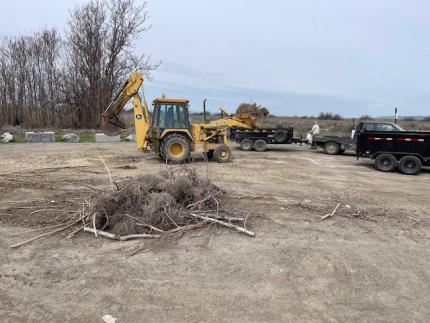
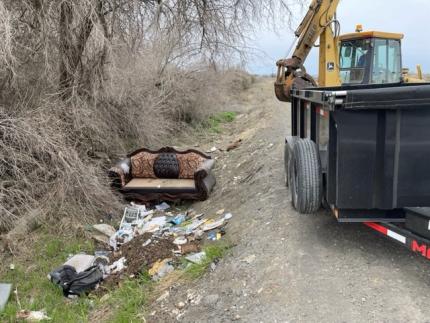
Jahns and Manderbach cleared beaver debris from a waterway in the Hope Valley Unit to alleviate flooding on neighboring private property. They also cleared beaver debris from a water control structure in the Mesa Lake Unit.
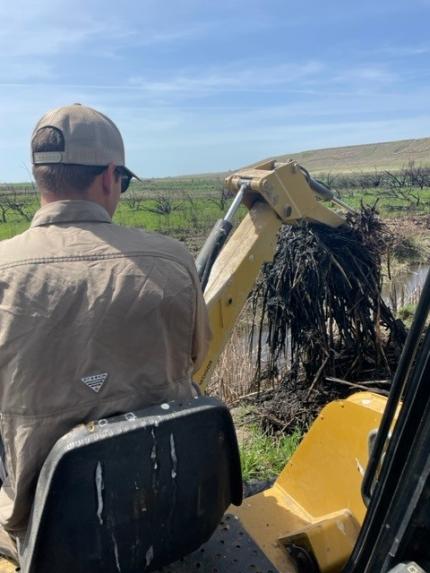
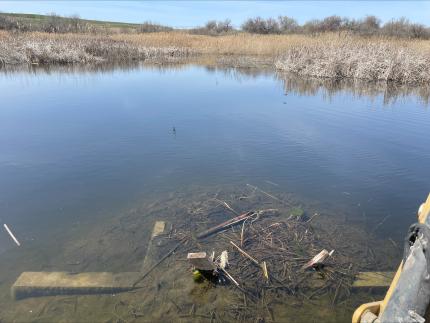
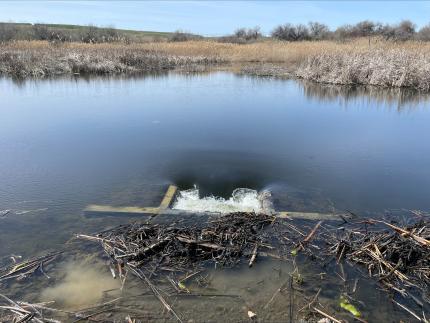
Conflict Specialist Wetzel assisted Washington Department of Transportation and Washington State Patrol to haze elk from several areas near I-90. Multiple stranded or nuisance beaver calls were handled in Yakima and Kittitas counties.
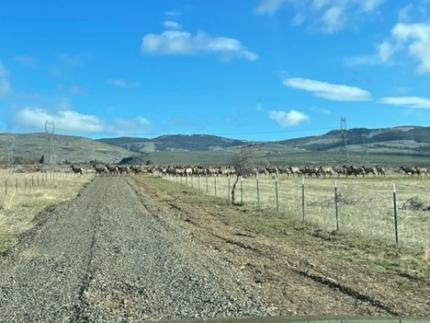
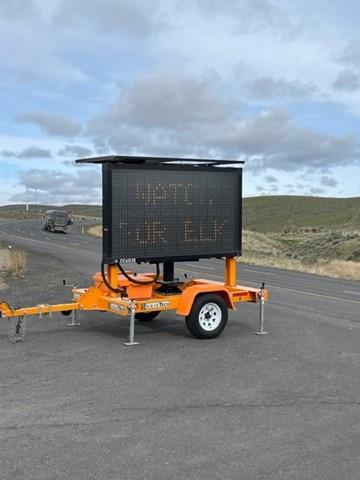
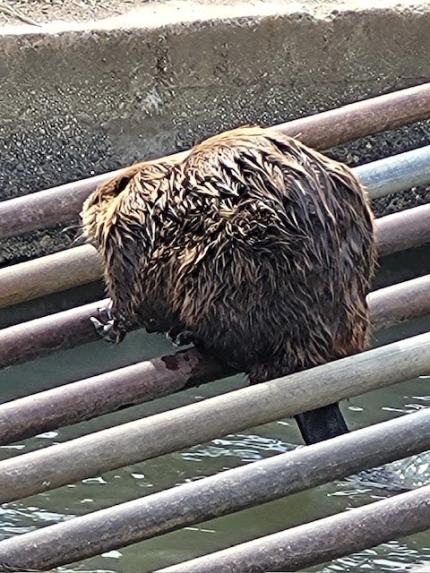
Managing Wildlife Populations
Butterfly Monitoring in San Juan County: District Wildlife Biologist Licence assisted Olympia staff members with monitoring multiple butterfly species including the island marble butterfly (IMB) and propertius duskywing on San Juan and Orcas islands respectively. This month marked the first day for a propertius duskywing monitoring and habitat restoration project on San Juan County Land Bank’s, Turtleback Mountain Preserve. The project is funded by a Competitive State Wildlife Grant. While on survey, biologists detected four propertius duskywings (mostly male) and discussed the next steps on the area designated for Gary oak woodland restoration. Staff members also completed the first round of IMB habitat monitoring at Cattle Point, Department of Natural Resources land as well as adult IMB monitoring transects. With only a handful of IMB detected, it appears that the flight season is slightly delayed this year.
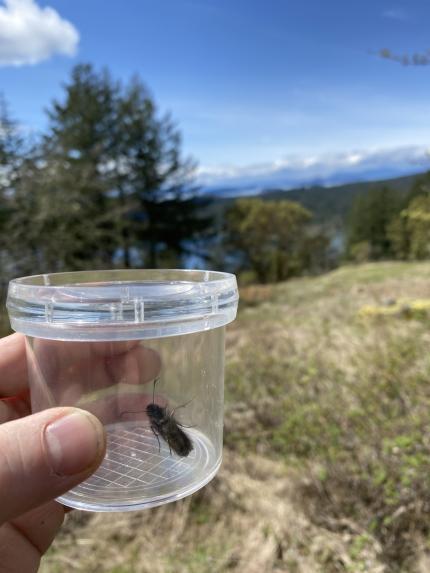
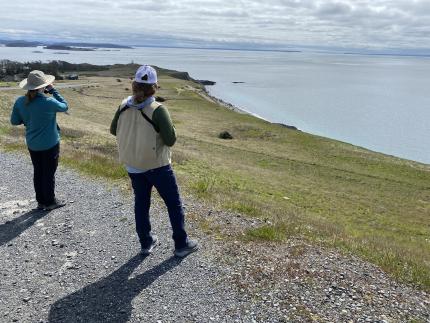
Sooty Grouse Hoot Surveys: Biologists Licence, Anderson, Smith and many other west side of Cascade Crest district biologists began surveying for sooty grouse this month. Numerous grouse have been detected on accessible survey routes. Acoustic recording devices were also deployed in ideal locations to help determine when and how long hooting occurs. Monitoring will continue through May.
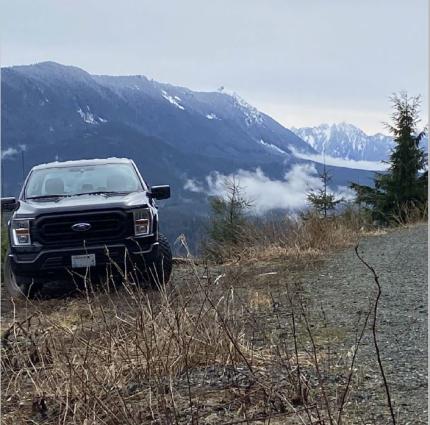
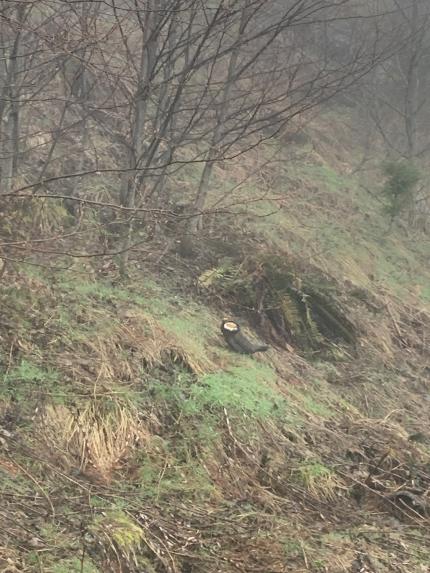
Purple Martin Colonies on the Seattle Waterfront: Biologists Anderson and Smith conducted the annual collaboration with volunteer stewards to take down used and put up cleaned gourds (natural and plastic super gourds). At least 50 over water gourds, which are only accessible by boat, and many showed occupation from 2022. The group also maintains other sites that are accessible by foot during low tide. The western purple martin is a genetically separate population segment from the eastern purple martin population. They are slightly larger, winter in an entirely different part of Brazil, and do not like to use the well-known “purple martin condominiums” that are so often used east of the Rockies. They are a state Species of Greatest Conservation Need in the Washington State Wildlife Action Plan.
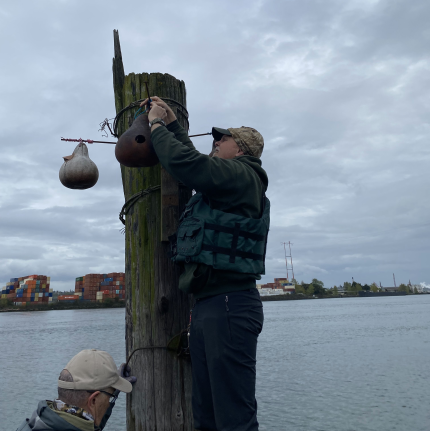
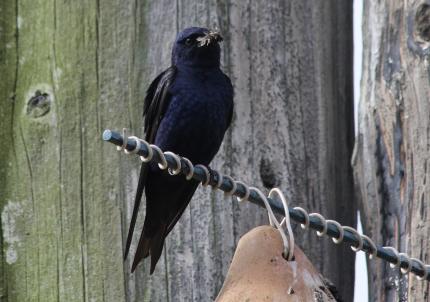
Common Loon Nesting Platform Deployment: Biologist Anderson and Smith deployed multiple loon nesting platforms at lakes known to have recent loon nesting activity. The common loon is a state listed “Sensitive” species and Species of Greatest Conservation Need in the Washington State Wildlife Action Plan. There are only about 30 (or less) nesting pairs in the state of Washington and Washington is the only remaining West Coast state to have nesting loons. They once bred southward, all the way to Mt. Shasta in California. Populations in the western states are being managed to support current populations and hopefully lead to growth in local populations as time progresses. WDFW and our partner, BioDiversity Research Institute (BRI) are in ongoing collaborations to provide for loon needs in Washington (and BRI throughout this species’ range).
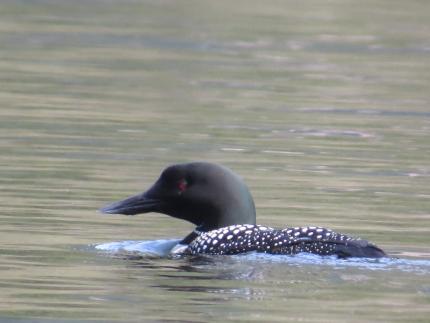
Providing Conflict Prevention and Education
Seattle American Robin Tree Removal: Biologist Anderson was contacted by a concerned neighbor as well as a developer regarding a supposed active robin’s nest in tree that was scheduled to be removed. Anderson examined the tree for nesting activity, but none was observed. The developer was not issued any state take. WDFW recommended to have the tree removal entity look over tree prior to cutting and examine it for bird nesting activity as the tree was removed. No bird nests or nesting activity was found by tree removal experts either. Birds and their nests are protected in WAC 220-200-100 and RCW 77.15.130.
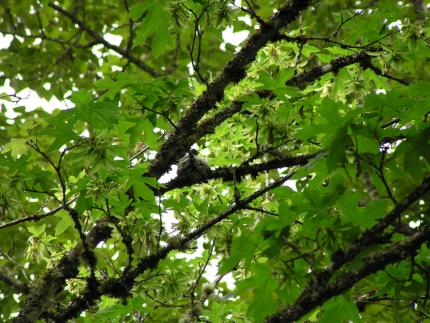
Three-legged Cougar Sighting in King County: Biologist Anderson received a note about a three-legged cougar caught on a trail camera. The animal looks healthy and is getting around fine with no reports of any depredations, etc. WDFW is not concerned at this time, and the reporting party was asked to keep in touch if it is seen again.
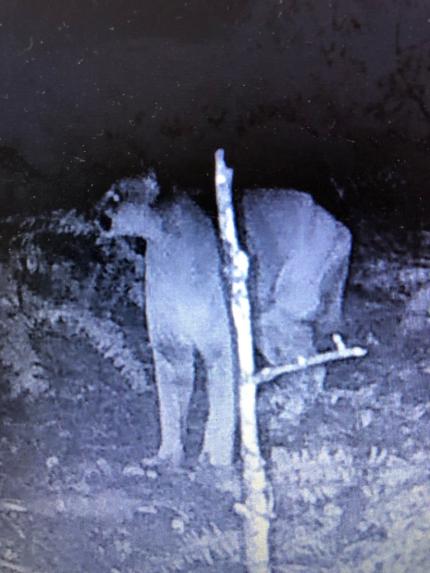
City of Bellevue Naturalist Program: Biologist Anderson provided an urban wildlife management class for the Bellevue Naturalist Program. Anderson participates in this event annually.
WDFW Opening Inland Freshwater Lakes Day: This year many WDFW employees assisted Fish Program with their annual “Opening Day”. Biologists Smith and Anderson, and many other Region 4 employees staffed various lakes to measure fish and take angler and boat counts for long term trend index needs. Anderson covered Walker Lake and Smith covered Lake Margaret. Anderson did not have a target raptor that he normally surveys for in conjunction with this opening day effort. He did have an osprey the entire time and an active raven’s nest (keeps boat counts interesting!). Smith had a common loon on Lake Margaret, which is a rare breeding bird in Washington with only 30 nesting pairs (a state listed “Sensitive” species). Fishing was good but there were less boat and angler numbers due to colder than usual weather. Anderson and Smith participate in this event annually to help the Fish Program, since they loan a boat to the wildlife biologists annually. It is a great opportunity to educate folks on lead-free tackle and wildlife that are affected by lead fishing products (e.g. loons, osprey taking fish all day, etc.).
Opstad Elementary Science Night in North Bend: Biologist Anderson teamed-up with Bats Northwest to staff a room with information on bat conservation, nighttime wildlife (e.g. northern flying squirrel, barred owl), and other mammalian predators common to Washington (e.g. black bear which is well known in North Bend, and cougar). Bats are the only flying mammal and in Washington and they are the major mammalian predator of insects. They help keep our insect populations in check (think, e.g., apple codling moth as one tasty they gobble up – no worms in apples!). Comparisons to other nighttime animals and mammalian predators were discussed along with basic bat life history, bats of Washington, and bats of the world. It went great and was very well attended. There is much conservation concern over bats of North America due to the bat-specific disease, White-nose syndrome. Find out more about White-nose Syndrome and what you can do.
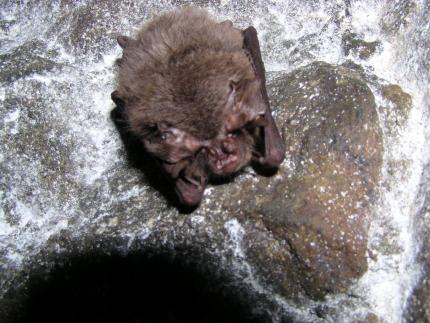
Managing Wildlife Populations
Klickitat Mule Deer Investigations: Biologist Wickhem took a detour during Townsend’s ground squirrel surveys to respond to a mortality notification for one of the Klickitat study deer. This doe appears to have died a few days prior but had been aggressively scavenged. This kept the collar moving enough to prevent a mortality signal which is based on movement. By the time Wickhem arrived, all she could find was a portion of the spine, the lower jaw, and a crushed skull, making it impossible to determine the cause of death. Biologist Bergh investigated two deer mortalities. There was one on the Klickitat Wildlife Area and one on the Yakima Nation Reservation where Yakima Nation biologists joined her. The one on the Klickitat Wildlife Area was just a picked-clean skeleton in a bed of poison oak so no cause of death could be determined. The one on the Yakima Nation Reservation was killed by a cougar as determined by tracks and a cache of organs. Assistant Wildlife Area Manager Hunt and Officer Bolton investigated a fourth dead study deer that was poached on the Klickitat Wildlife Area. These deer are part of a 4-year study being conducted throughout Game Management Units (GMUs) 388 and 382, to track the annual movements of female mule deer and locate important migration corridors. Staff members are also attempting to determine cause of death when an animal dies, which has proven to be difficult. In winter 2021, 81 collars were deployed throughout GMUs for this effort. Twenty-two collars were deployed in the winter of 2022 and 2023. In winter 2023, most were redeployments replacing study deer that died over the first two years of the study. This is the last year of the study, so this and any other collars collected will not be redeployed.
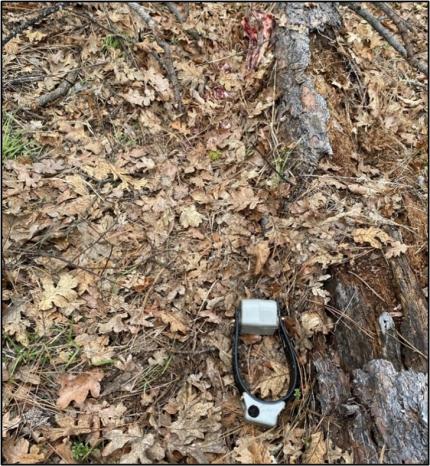
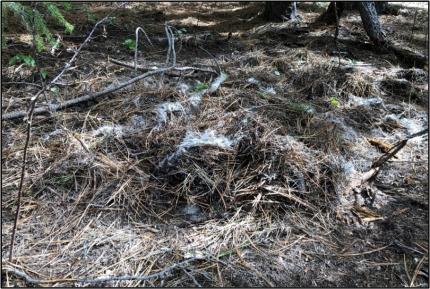
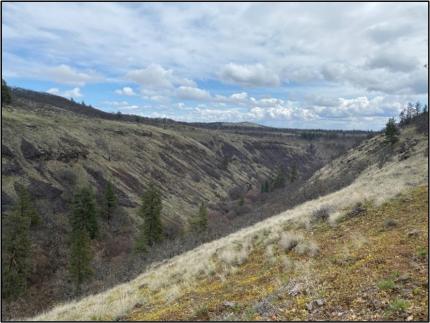
Sooty Grouse Surveys: Western Washington WDFW wildlife biologists are testing a survey method for sooty grouse (formerly called blue grouse). The effort involves establishing driving routes in the Cascade Range and Olympic Mountains as well as the Willapa Hills. The routes include 15 to 30 listening stops where biologists spend time listening for male sooty grouse calls during the early morning hours. The survey method is borrowed from Oregon Department of Fish and Wildlife and Oregon State University. We thank them for their development of the method and sharing. When fully developed and implemented, the survey will generate sooty grouse population trend estimates that are independent of grouse harvest. To date, Biologists Stephens and Holman along with Conflict Specialist Aubrey have set five of the survey routes and conducted four surveys.
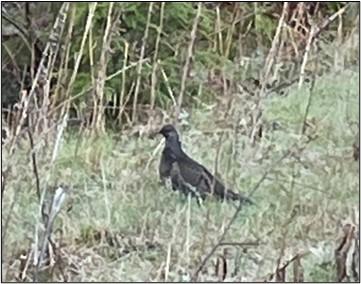
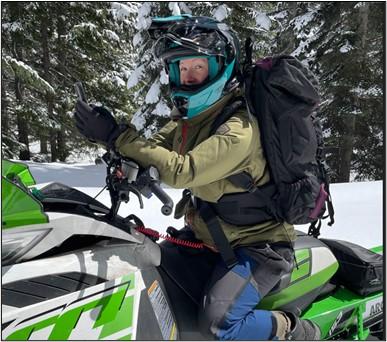
Deceased Bald Eagle: Wildlife Conflict Specialist Jacobsen responded to a report of a deceased bald eagle in Skamania County. The bald eagle was reported several times that morning by passers-by in a residential area. Wildlife Conflict Specialist Jacobsen retrieved the eagle carcass and determined that the eagle died after coming into contact with the power lines immediately above it. The eagle had burn marks on its underwing and face. Jacobsen notified the United States Fish and Wildlife Service (USFWS) about the deceased eagle. The carcass will be transferred to the USFWS for their eagle repository.
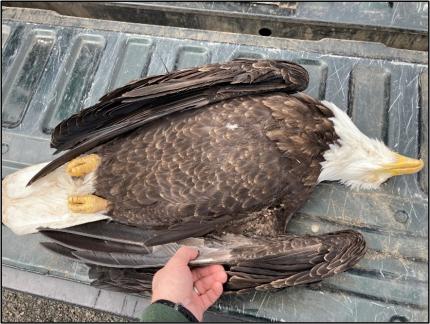
Glenwood Valley Annual Sandhill Crane Survey: Biologists Wickhem and Bergh, Technician Motiff, Volunteer Castagnoli and staff members from the USFWS joined forces for the annual sandhill crane survey on and around Conboy Lake National Wildlife Refuge. The Glenwood Valley is one of only a few areas in the state where sandhill cranes nest. Sandhill cranes mate for life and return to the same “territory” each year to mate and raise their colts before migrating south in the fall. For this survey, the groups split up into teams to drive and hike around different crane territories. They record all cranes observed and look for crane nests. Wickhem and her survey partners confirmed two nests, observed a nest exchange (males and females take turns sitting on the nest), and witnessed two cranes mating, which made for an exciting survey!
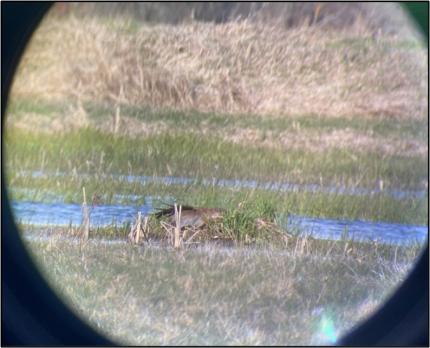
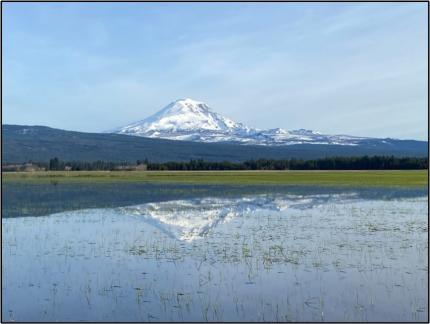
Providing Conflict Prevention and Education
Elk Hazing Materials: Wildlife Conflict Specialist Jacobsen delivered elk hazing explosives to a landowner in Trout Lake after nearly 200 elk were observed in one of the landowner’s crop fields.
Residential Deer Damage: Wildlife Conflict Specialist Jacobsen provided advice to a landowner who was concerned about the growing deer population in her area and damage to the ornamental plants around here residence.
Livestock Carcass Disposal Program: Wildlife Conflict Specialist Jacobsen continues to work with local livestock producers in Klickitat County within the Big Muddy Wolf Pack territory to help dispose of livestock carcasses. Jacobsen has transported multiple carcasses to local landfills to prevent wolf scavenging over the past several weeks.
Beaver Damage to Orchard: Wildlife Conflict Specialist Jacobsen worked with a commercial apple and pear orchard regarding ongoing beaver damage issues to the orchard. Over the past year, beavers have cut down hundreds of apple trees in one block of the orchard. Jacobsen discussed beaver trapping and relocation options, lethal removal options, and nonlethal deterrents with the orchard manager. Wildlife Conflict Technician Kolenberg prepared strips of bear hide for the orchard to help deter the beavers from crawling under the fences around the orchard.
Deer Damage to Hay: Wildlife Conflict Specialist Jacobsen was contacted by a landowner in western Clark County regarding deer damage to his hay crop. The producer had been documenting over a dozen deer feeding on and compacting his hay crop daily. Jacobsen enrolled the producer on a Damage Prevention Cooperative Agreement. The landowner had been attempting to haze the deer out of his fields for several months but had been unsuccessful so far. Jacobsen and Technician Kolenberg provided cracker shell explosives to the landowner as well as permits for lethal removal of the deer. After a couple of the deer had been removed by hunters, the number of deer visiting the fields drastically declined.
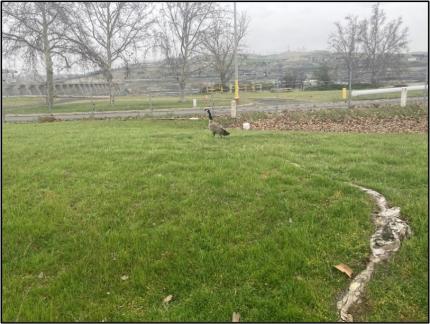
Injured Bald Eagle Report: Wildlife Conflict Specialist Jacobsen received a report of an injured bald eagle in Skamania County along the Columbia River. Jacobsen looked for the eagle but was unable to locate it. It is likely that this is the same eagle that Biologist Wickhem tried to capture a few weeks prior. It was a cold, rainy, and windy day along the edge of the Columbia River.
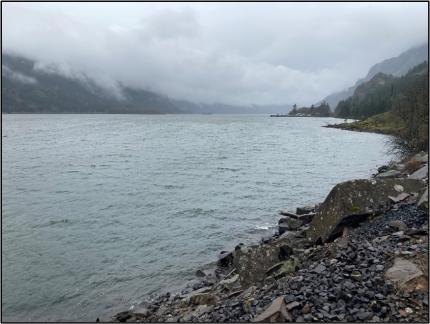
Deer with Feed Sack: Over the course of two weeks, multiple landowners in a several-block radius of Washougal contacted WDFW to report a deer with what appears to be a feed sack wrapped around her neck. Wildlife Conflict Specialist Jacobsen and Technician Kolenberg spoke with the landowners and determined that the sack did not pose much of a safety risk to the deer at this point and believed that the sack would likely rip off or fall off soon. Jacobsen will continue to monitor reports of the deer and her health condition.
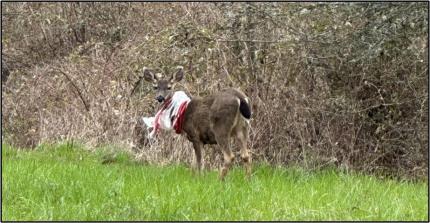
Trapped Canada Goose: Wildlife Conflict Specialist Jacobsen was contacted by an employee of one of the dams along the Columbia River regarding a Canada goose that was stuck and possibly injured in part of the dam lock system. The goose likely landed in the visible water within a small, concrete chamber, but was not able to fly out given the limited size of the chamber. As Jacobsen arrived, a barge was about to pass through the locks. Jacobsen picked up a triangle-shaped net attached to a rope just as the locks opened and the barge (and the goose within the chamber) began to descend with the water column from the top of the dam to the bottom of the dam. Knowing that it would only take a minute or two for the goose to descend with the water column roughly 200 feet to the bottom of the dam, Jacobsen quickly threw the net and a rope into the concrete chamber in an attempt to scoop the goose up. Multiple attempts were made to get the goose near the net as the water column and goose descended rapidly, but to no avail. With only about two feet of extra rope line left before the goose descended beyond reach (it was already roughly 50-75’ below Jacobsen at this point), the goose managed to swim over the submerged net, at which point Jacobsen quickly hauled the goose up and out of the chamber. The goose made it out safely with only a second or two left to spare before it would have been lost to the depths of the dam!
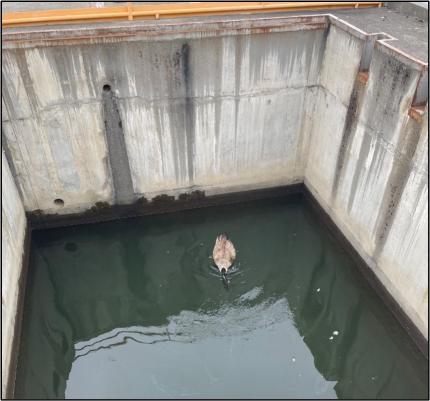
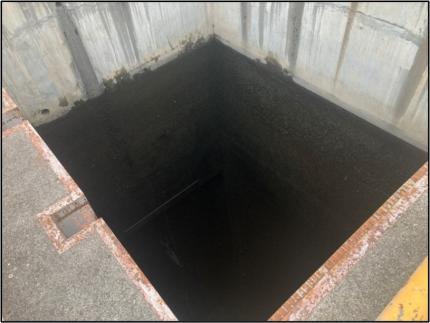
Injured Elk: Wildlife Conflict Specialist Jacobsen and Officer Nelson responded to a report of a sick bull elk that had been living along a narrow stretch of highway in Klickitat County. After assessing the condition of the elk and the traffic safety risk due to the amount of attention the elk was receiving from passing motorists, Jacobsen and Nelson decided to euthanize the elk. Klickitat County sheriff deputies provided traffic assistance while the elk was euthanized.
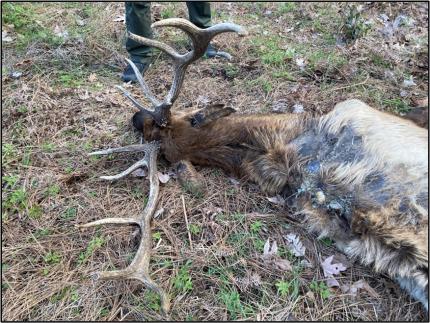
Wolf Meetings: Wildlife Conflict Specialist Jacobsen and Wolf Biologist Spence met with livestock producers in Klickitat County to discuss wolf concerns and range riding activities to prevent livestock-wolf conflict this grazing season.
Aggressive Nutria: Wildlife Conflict Specialist Jacobsen fielded a report regarding an aggressive nutria in Clark County. The nutria had apparently taken up residence in a housing community and had already gotten into a tussle with a domestic dog and was reported to have bitten a child at some point. Jacobsen provided advice to the property manager and advised her to contact WDFW if it is seen again. Technician Kolenberg will help monitor the situation and capture the animal if the opportunity presents itself.
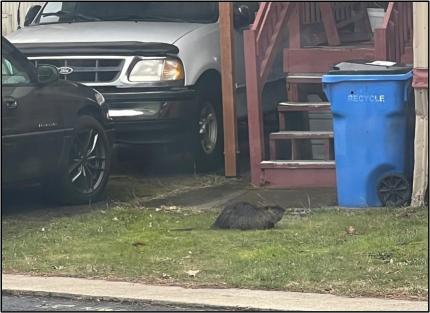
Bear Issues Begin: Wildlife Conflict Specialist Jacobsen received his first official bear complaints of the year from a community in Skamania County. Over the past two and a half weeks, a bear has been breaking into structures and ripping apart sheds in search of food. The bear ripped apart a chicken coop and killed and consumed eight chickens on one property. Jacobsen and Technician Kolenberg set a live trap for the bear at the residence. Jacobsen will be working with the small community on being “bear wise” over the coming days and weeks.
Depredation on Goat: Wildlife Conflict Specialist Jacobsen and Technician Kolenberg responded to a report of a missing goat in Skamania County. The goat owner had observed drag marks through the fresh dew on the grass and found some blood left on fern fronds in the adjacent woods but did not continue following the trail until WDFW staff members arrived. Jacobsen and Technician Kolenberg trailed the goat carcass through the woods and eventually located the cached goat carcass in the underbrush, roughly 125 yards away from the paddock where the goat was taken. Closer inspection of the carcass revealed that it was killed and cached by a cougar. A trail camera was installed over the carcass and captured some stunning videos of a cougar returning to the carcass the following day. The goat owner rehomed his remaining goat on the afternoon of the depredation, so no more attractants were present at the site.
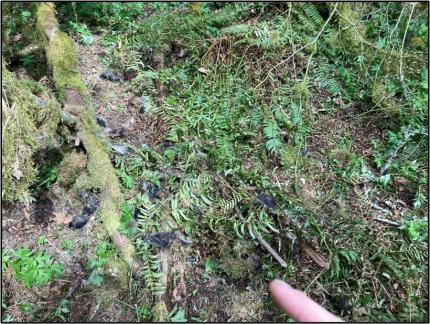
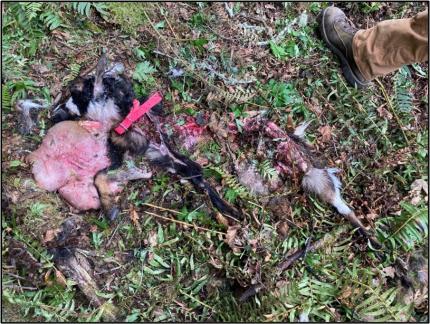
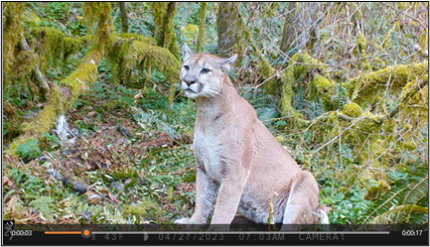
Goat Depredation #2: Wildlife Conflict Specialist Jacobsen was contacted about another goat that was found dead in Clark County. The landowner observed coyotes feeding on the carcass but wasn’t sure if they were responsible for the depredation or not. Unfortunately, the landowner waited a day to report the incident and the carcass was already gone by the time he reported it. Jacobsen advised the landowner to install a trail camera in the area to monitor wildlife activity and to keep all his remaining goats locked up at night.
Bobcat Sighting: A concerned landowner contacted Wildlife Conflict Specialist Jacobsen regarding a bobcat sighting in Klickitat County. Jacobsen advised the landowner that he had nothing to be concerned about, especially since he did not own any chickens.
Injured Deer: Wildlife Conflict Specialist Jacobsen followed up on a report of an injured deer in Klickitat County.
Conserving Natural Landscapes
And So, It Begins: Despite persistent cool temperatures and rain fall that seemingly never ceases, spring is upon us. For wildlife area staff members, this means it is weed control season. During an 18-hour dry spell, Assistant Manager Risley treated three acres of Washougal River frontage for garlic mustard, a Class A noxious weed, lesser celandine, a Class B noxious weed, and shiny geranium, also a Class B noxious weed. These invasive weeds are some of the earliest to emerge in spring and require prompt treatment if control efforts are to be successful. If left untreated, these weeds can easily outcompete native plants, reducing overall habitat quality and productivity for the species that use these wildlife areas.
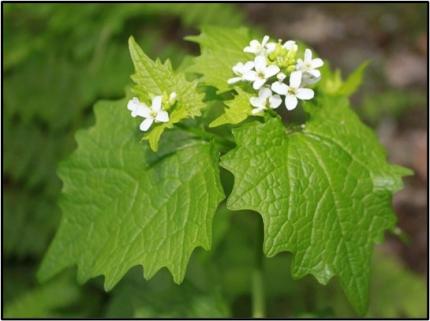
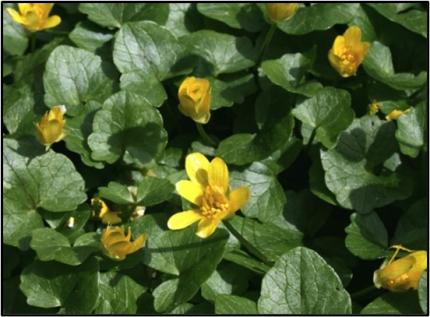
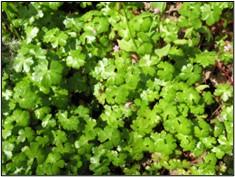
That’s a Wrap: Stretching barbed wire and installing new gates marked the completion of the 5,000 ft fencing replacement project at Shillapoo Wildlife Area. Farmers that lease pastured areas on the wildlife area are eager to release their cattle for grazing and wildlife area staff members can now rest assured that croplands and tree plantings are secure from the hungry grazers.
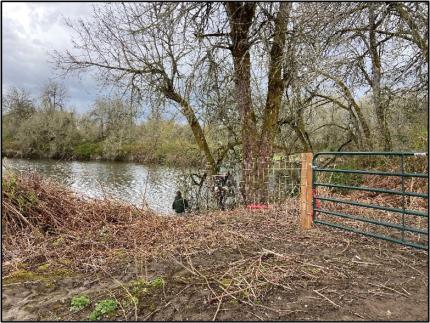

Providing Education and Outreach
White Salmon Tree Fest: Wildlife Conflict Specialist Jacobsen staffed an outreach table at the annual weekend White Salmon Tree Fest in White Salmon, hosted by the Underwood Conservation District. In addition to the Underwood Conservation District and WDFW, other conservation-based organizations and businesses such as Department of Natural Resources, U.S Forest Service, U.S Fish and Wildlife Service, Columbia Land Trust, and Humble Roots Nursery were also present. The event was well-attended by the public and the weather was perfect for the event.
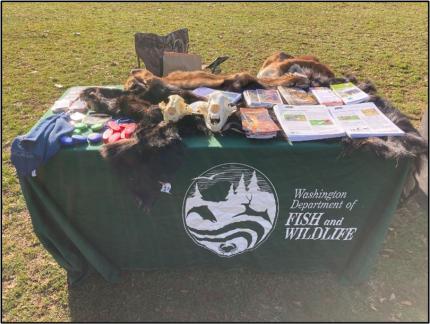
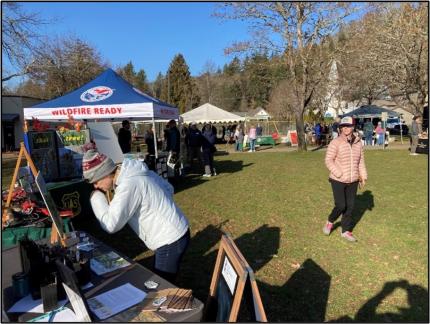
Washington Future Farmers of America (FFA) Environmental and Natural Resources State Contest: Wildlife Conflict Specialist Jacobsen helped facilitate the annual Washington FFA Environmental and Natural Resources statewide contest in Cashmere. This year, 13 high school teams from around the state gathered to test their knowledge on natural resources topics including soils, water quality, GPS usage, waste management, fisheries, and wildlife. Jacobsen participated in this activity as a high school student and later went on to teach high school and coach his own FFA Natural Resources teams before coming to WDFW. Participation in this contest as a high school student helped Jacobsen determine that he wanted to pursue a career in wildlife, and he has been active with the contest ever since. This year, Jacobsen compiled specimens for the wildlife and fisheries specimen identification portion of the contest and wrote the waste management practicum for the students. This year’s waste management scenario focused on livestock carcass waste management, which is a real-life ongoing issue that Jacobsen has been working on in District 9. The Cashmere and Reardan teams took the top honors at this year’s contest. The Cashmere team will go on to compete in this contest at the National FFA Convention in Indianapolis in November.
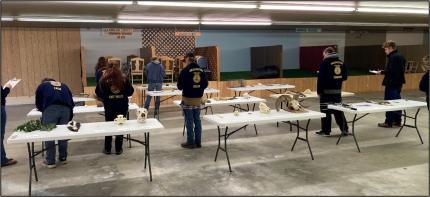
Managing Wildlife Populations
Martin: Biologist Tirhi, Volunteer Sheridan and Pt. Defiance partners put martin boxes up at Chambers Bay. Volunteer Sheridan will monitor the boxes annually.
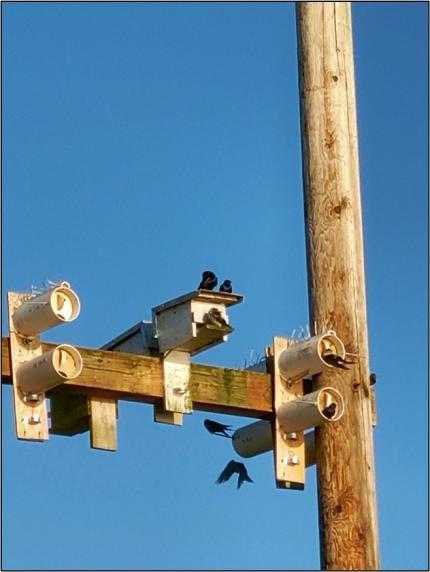
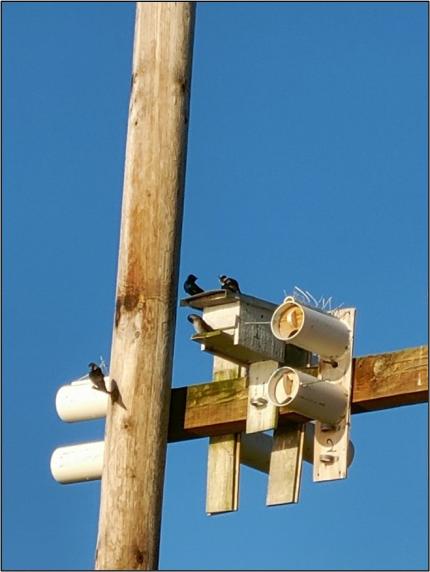
Elk Surveys: Biologist Murphie recently participated in composition surveys for elk in the Clearwater Game Management Unit (GMU) 615 along with Biologist Ament and Quinault Tribal Wildlife Program Lead Phillips. Digital images were taken during the survey of encountered elk groups. From these images, biologists can get an accurate tally of elk and determine the number of bulls, cows, and calves in each group. A preliminary tally from this survey was 323 elk with some known or marked groups located in cover and not counted.
Western Pond Turtle: Biologist Murphie conducted site maintenance at the western pond turtle recovery site in District 15. Additionally, he built and deployed a basking platform. Later this summer, the platform will be fitted with a passive integrated transponder (PIT) tag antenna array from which we hope to identify which turtles we released into the pond are still there. Biologist Murphie will build and deploy at least two more platforms in May.
Taylor’s Checkerspot Butterfly: Biologist Murphie has been preparing for this season's butterfly survey work in District 16. He conducted the first surveys of the season on April 27 and 28, when weather conditions were ideal. However, he reports that no Taylor’s checkerspot butterflies were seen. More to come, as these surveys will be conducted over the next few weeks.
Sooty Grouse: Biologist Murphie reports that persistent snow along several higher elevation roads in the district continue to delay work on the sooty grouse survey effort. Biologist Murphy reports hearing/seeing male sooty grouse courtship displays/calling this period on April 24 and 26. Murphy deployed one audio recording device, as part of the effort to better document the timing and extent of this behavior.
Conserving Natural Landscapes
Lands 20/20: Biologist Novack and Cent worked on developing proposals for the upcoming Lands 20/20 process.
Providing Education and Outreach
Snowy Plover: Public Service announcements focused on Snowy Plover protection were broadcast over the radio during Earth Day weekend when recreationists were visiting the beaches to harvest razor clams. Shellfish staff members surveyed diggers and found that 11-12% of recreationists within the broadcast area heard the radio ads before going out to dig.
General Wildlife Inquiries: Biologist Murphie responded to inquiries received by phone, email, or in person. Including:
- Deer with hair loss
- River otter
- Elk hunting
- Western pond turtle
- Turkey hunting
Conducting Business Operations and Policy
Aircraft Safety Training Course: As an instructor for this course, Biologist Murphie did some planning around the next course to be held in Port Townsend in May.
Other
Other planning/prep work: Biologist Murphie also spent time planning upcoming bat and bear work.